Explore the most mysterious ghost towns in the UK and beyond
The eeriest escapes in the world
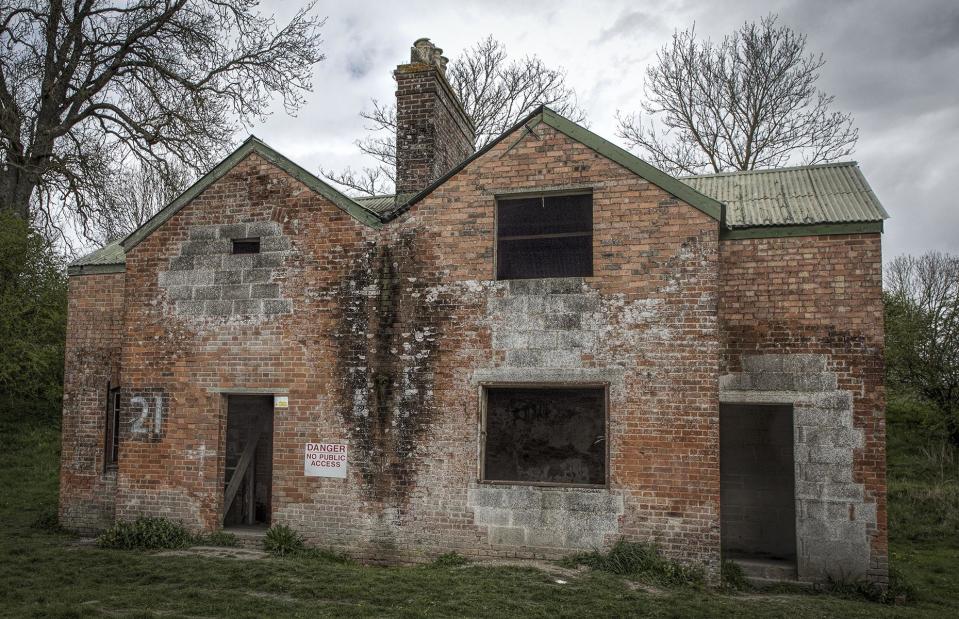
SteveMcCarthy/Shutterstock
A deserted Gold Rush town, a haunted pearl fishing village, an eerie abandoned island and more – these ghost towns all lie frozen in time.
Read on for a moving, intriguing and at times spooky snapshot of life as it once was, with our round-up of the world's most captivating ghost towns...
Imber, England, UK
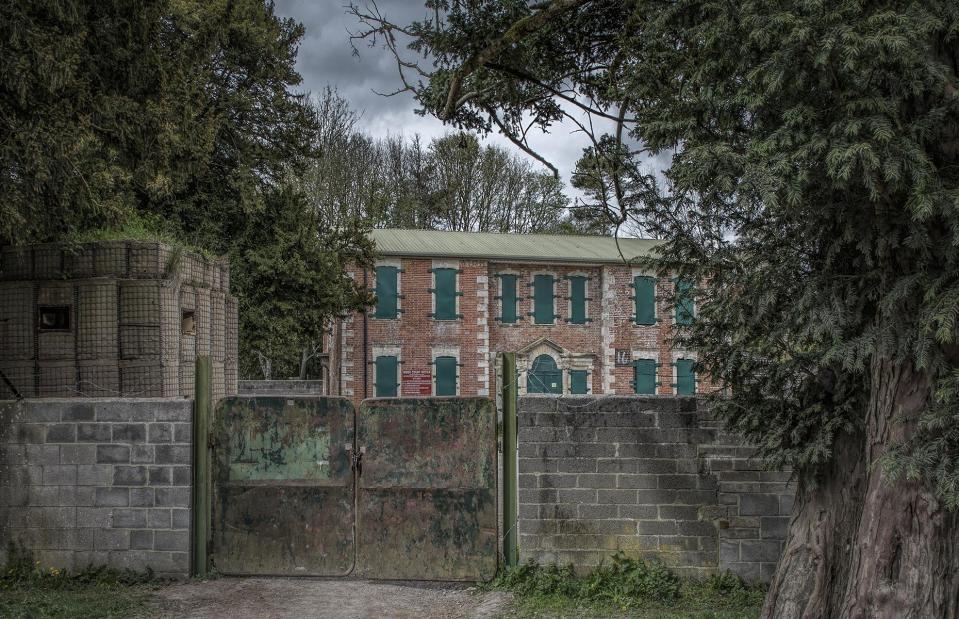
SteveMcCarthy/Shutterstock
As the Second World War raged on in 1943, the Ministry of Defence decided to evacuate Imber on Salisbury Plain and use it as a training ground for the US army. The devastated village residents were given just 47 days to pack up and find new homes and it’s said the local blacksmith died from a broken heart.
Imber, England, UK
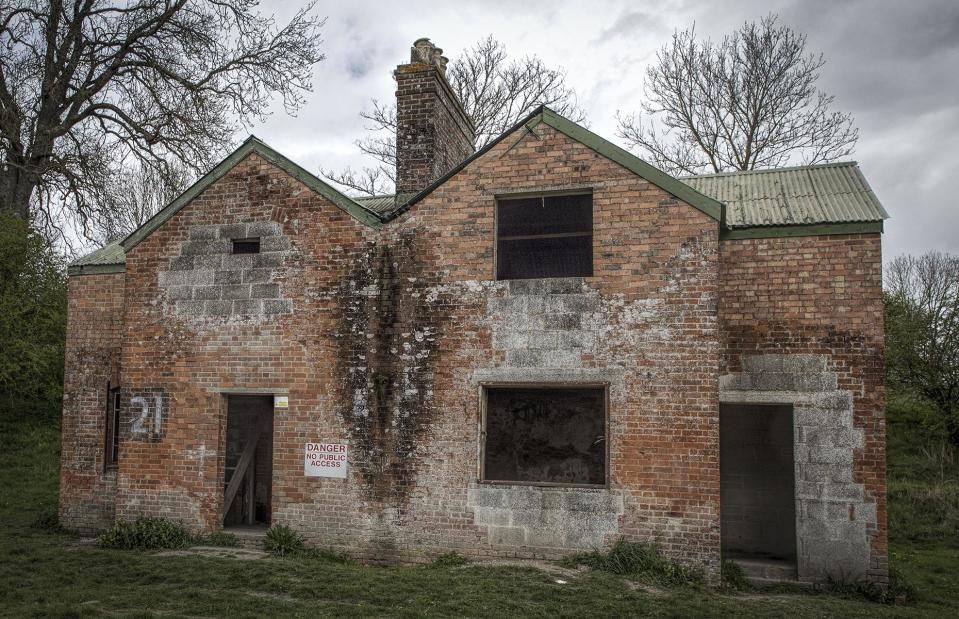
SteveMcCarthy/Shutterstock
Today, Imber is still used to train soldiers in urban warfare, but the MOD opens it to the public on selected dates, which are dictated by military training schedules. Visit the 13th-century St Giles church, where many of Imber’s displaced residents have since been returned for burial. Even on open days, access to what remains of the village is very limited because of the danger of unexploded bombs, but you can catch a disconcerting glimpse of The Bell pub, Imber Court manor house and other homes from the road.
Dorothy, Alberta, Canada
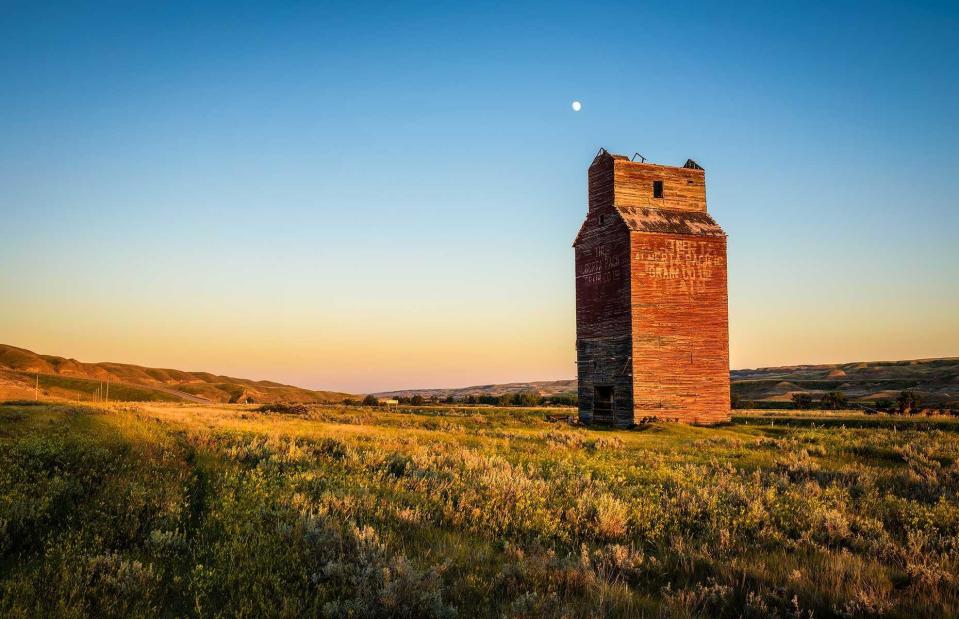
Nick Fox/Shutterstock
Travel around 30 minutes southeast of Drumheller – known as the world’s dinosaur capital – and you’ll come to the hamlet of Dorothy. Located in Alberta’s Badlands, the town still has a few steadfast local residents – but you’ll find abandoned relics from the early 20th century lying untouched and boarded up. Dorothy was once a go-getting pioneer town, growing to more than 100 residents at its peak during the 1920s. However, the prosperity brought by the nearby railway line didn’t last...
Dorothy, Alberta, Canada
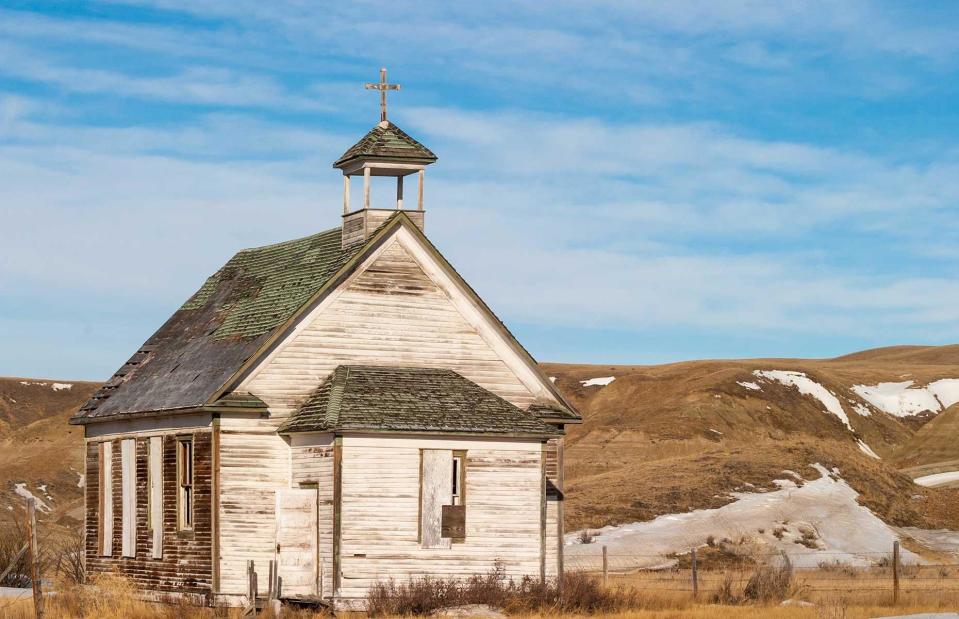
Nick Fox/Shutterstock
Dorothy’s school shuttered in 1960 and both of the hamlet’s churches closed their doors to worshippers in the 1960s too. Like many rural spots in southern Alberta, farming was a key industry and Dorothy once boasted three grain elevators. Now only one remains. Look closely and you can still see the lettering of the Alberta Pacific Grain Company, a firm long-since taken over. You can also see the remains of the general store.
Thurmond, West Virginia, USA
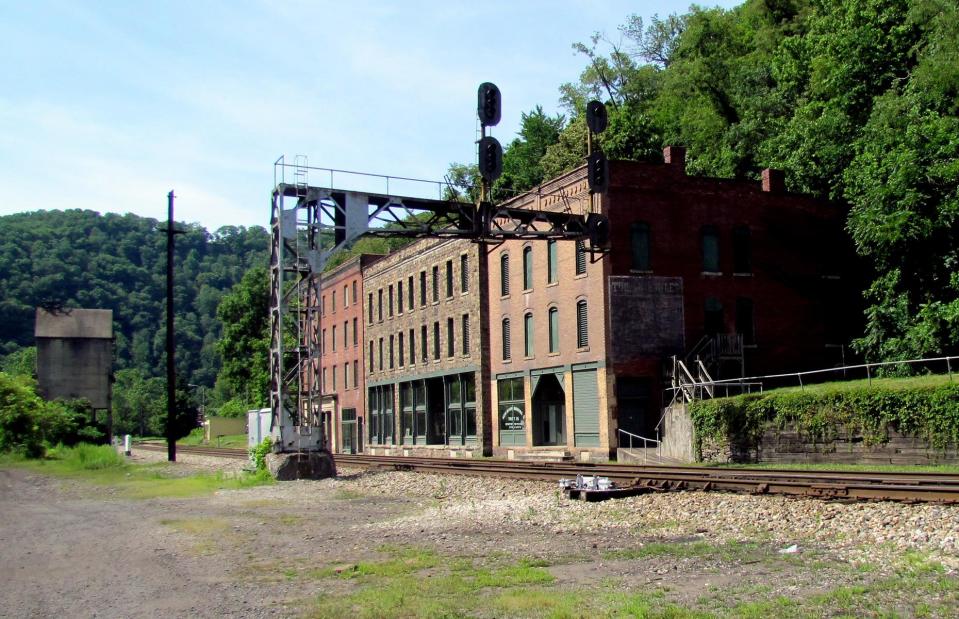
bobistraveling/Flickr/CC BY 2.0
During the heyday of coal mining in the early 20th century, Thurmond was a prosperous town with business and facilities for the Chesapeake and Ohio Railway. A 100-room hotel in the town, Dun Glen opened in 1901 and became a nationally known resort. It burned down in 1930, marking the beginning of a decline that left Thurmond a ghost town by the 1950s.
Thurmond, West Virginia, USA
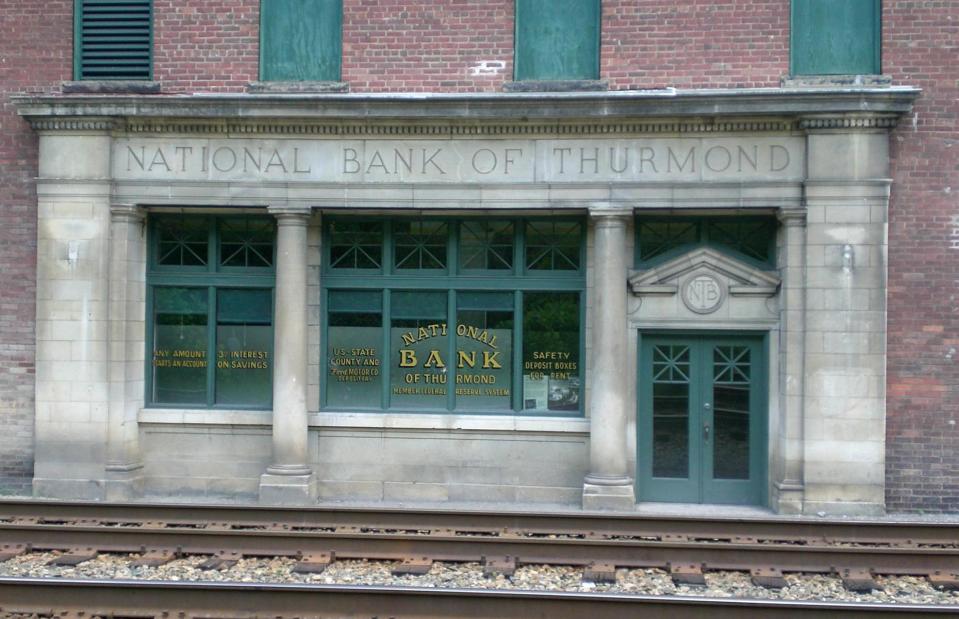
jamiev_03/Flickr/CC BY-NC-ND 2.0
Today it still possesses the characteristics of a 1920s Appalachian coal town and is a popular tourist destination run by the National Park Service, as part of the New River Gorge.
Port Arthur, Tasmania, Australia
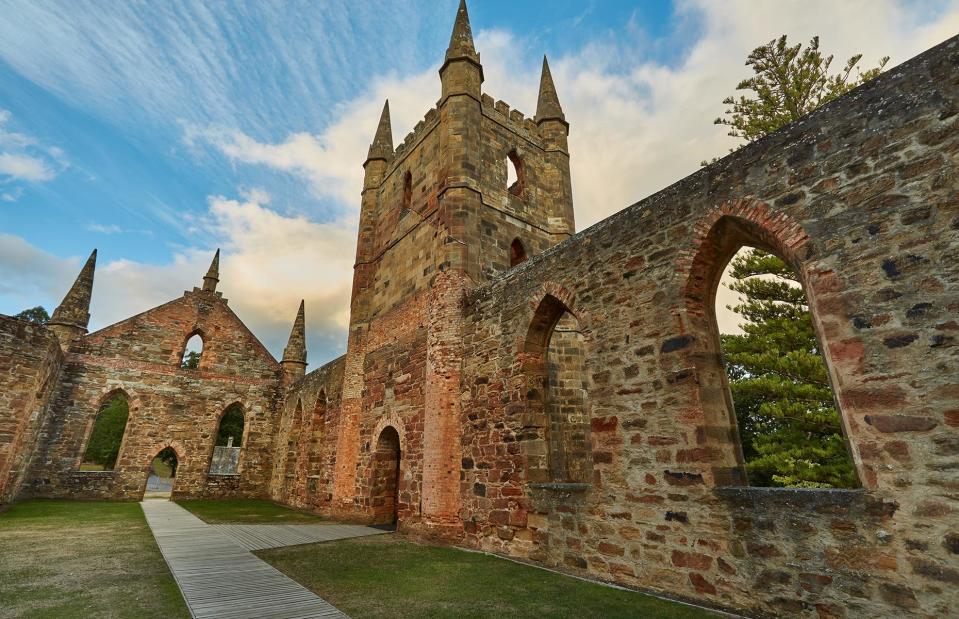
Peter Gudella/Shutterstock
Now an open-air museum, Port Arthur used to be a small town and a convict settlement in Tasmania, Australia. From 1833 to 1853 it was the destination for secondary British offenders, convicted of the most notorious crimes after their arrival in Australia.
Port Arthur, Tasmania, Australia
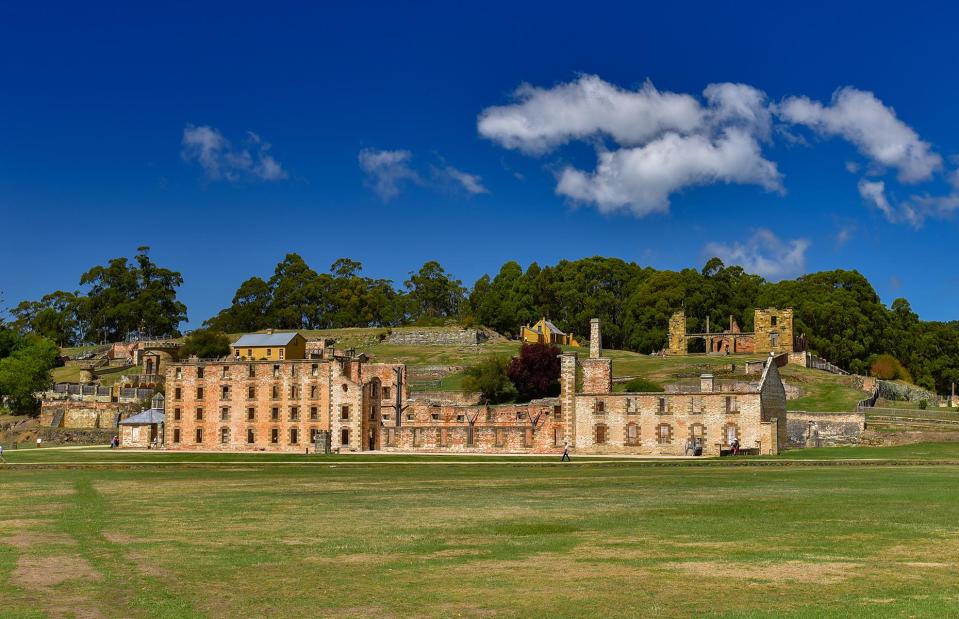
Mo Wu/Shutterstock
It’s notable for being one of the first prisons that used psychological punishment instead of physical – food was used as a reward, a 'silent system' was implemented that forbade inmates from speaking and a 'separate prison system' (similar to modern-day solitary confinement), that subjected convicts to the lack of light and sound, was trialled.
Bents, Saskatchewan, Canada
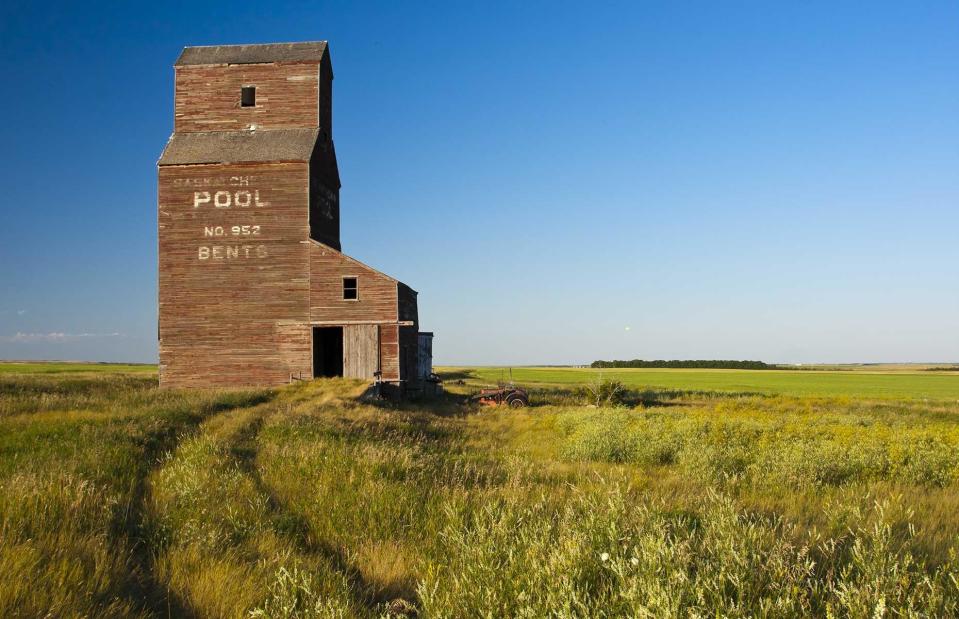
Scott Prokop/Shutterstock
Just over an hour’s drive south-west from Saskatoon lies the tiny town of Bents. Its heyday came in the 1930s when one of the last stretches of railway was built into the Canadian Prairies. The trains were halted in the 1970s, when the running of them became financially difficult and the population of Bents gradually fell away.
Bents, Saskatchewan, Canada
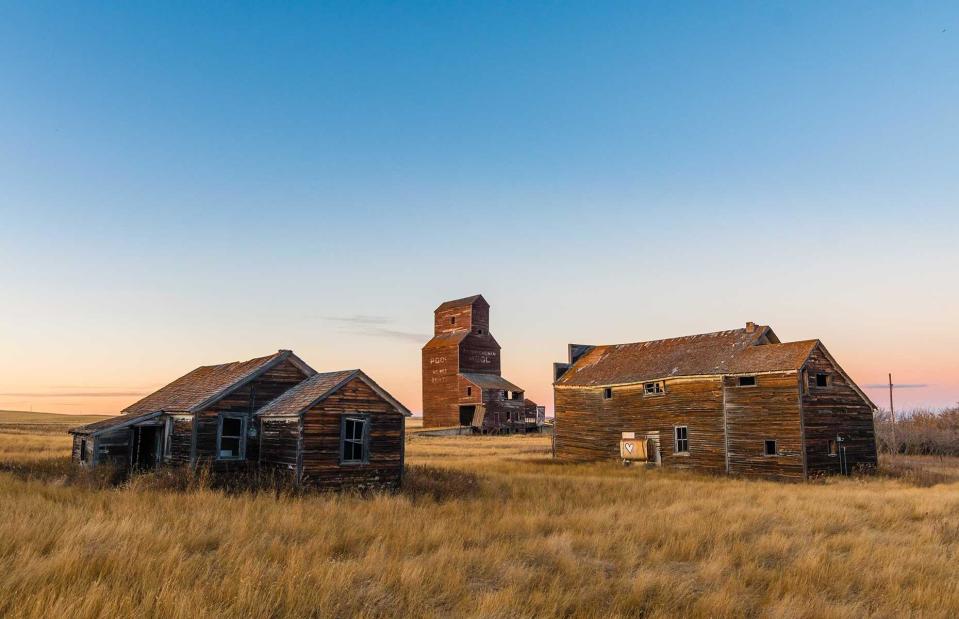
Takingthemike/Shutterstock
The buildings that remain include one of the two huge grain stores from the 1920s, with an abandoned tractor discarded at the front. Inside the general store you’ll also find a pair of ice skates hanging on the wall and row after row of empty shelving.
Fordlândia, Brazil
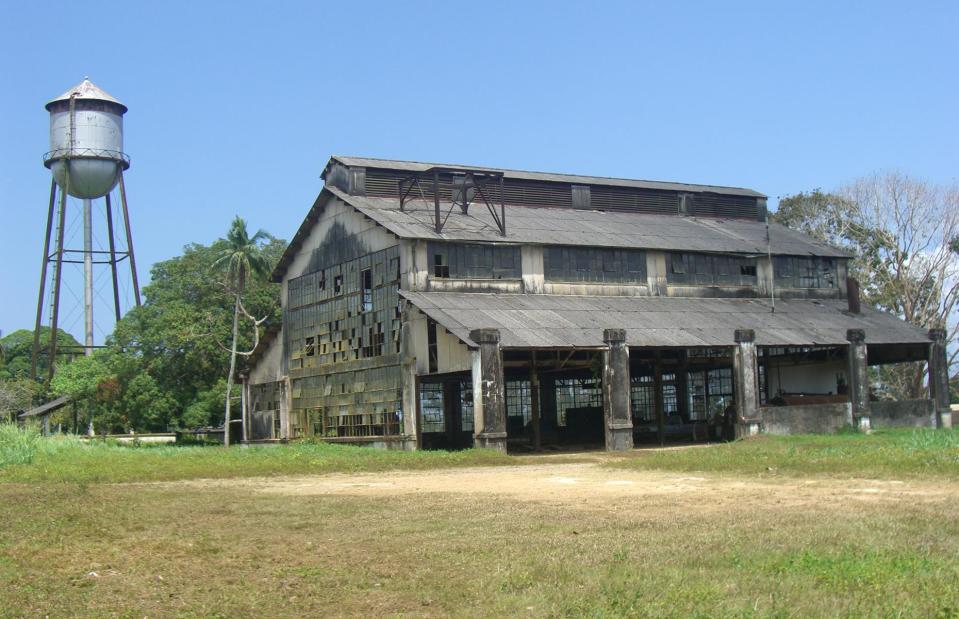
Amit Evron/Wikimedia/CC BY-SA 3.0
This district in the Brazilian city Aveiro was established in 1928 by Henry Ford and the Ford Motor Company, its primary purpose to produce rubber from trees in the Amazon rainforest. However, Ford’s project failed, and it was abandoned in 1934.
Fordlândia, Brazil
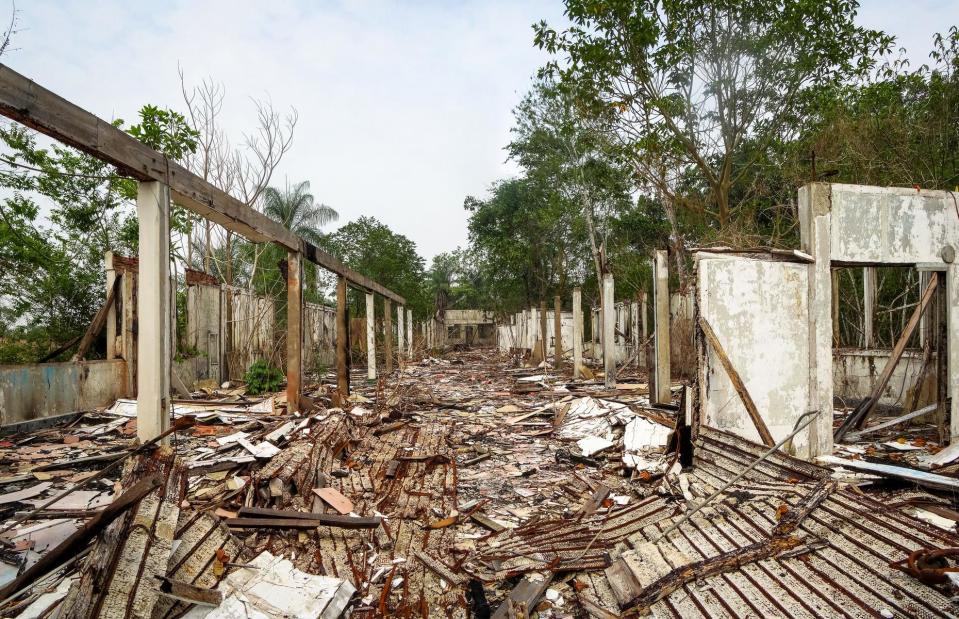
Babak Fakhamzadeh/Flickr/CC BY-NC 2.0
Today, a small part of the district is inhabited by around 2,000 people and most of the original buildings stand as they were back in the 1930s. Although all the buildings, including the six houses in the 'American Village', were left behind with the original furnishings, equipment and even clothing, most of it has been stolen by looters.
Rowley, Alberta, Canada
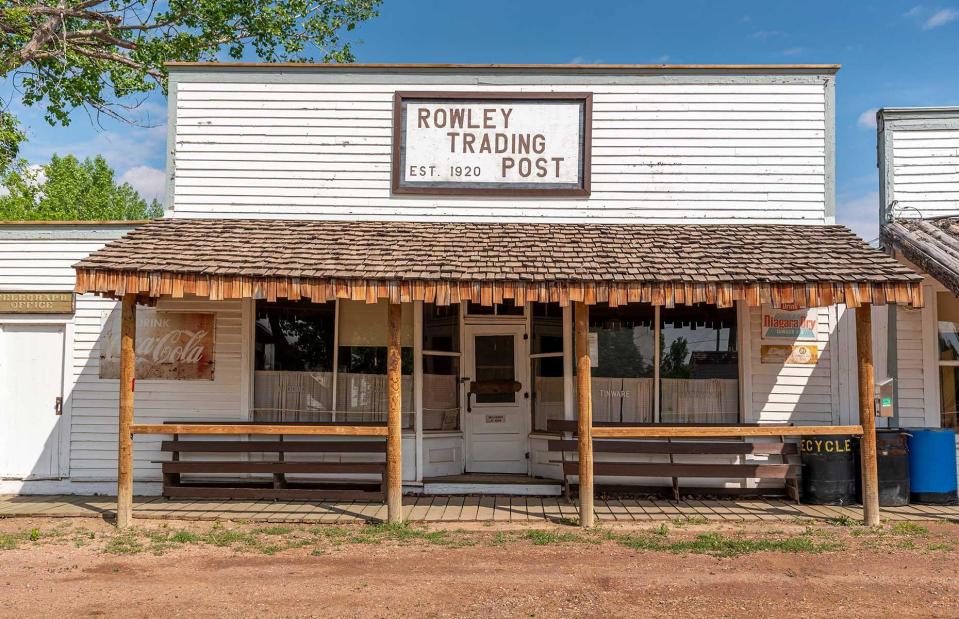
Jeff Whyte/Shutterstock
In the 1920s, around 500 people lived in this village in Alberta. Today the count is just eight – and after the final train rolled through in 1999, it seemed any hope of prosperity was lost forever. Things are looking up for the town these days though, as it has become a well-loved stop on the ghost-town trail. While some buildings have been done up by the remaining locals, there are many that still lie in a derelict state.
Rowley, Alberta, Canada
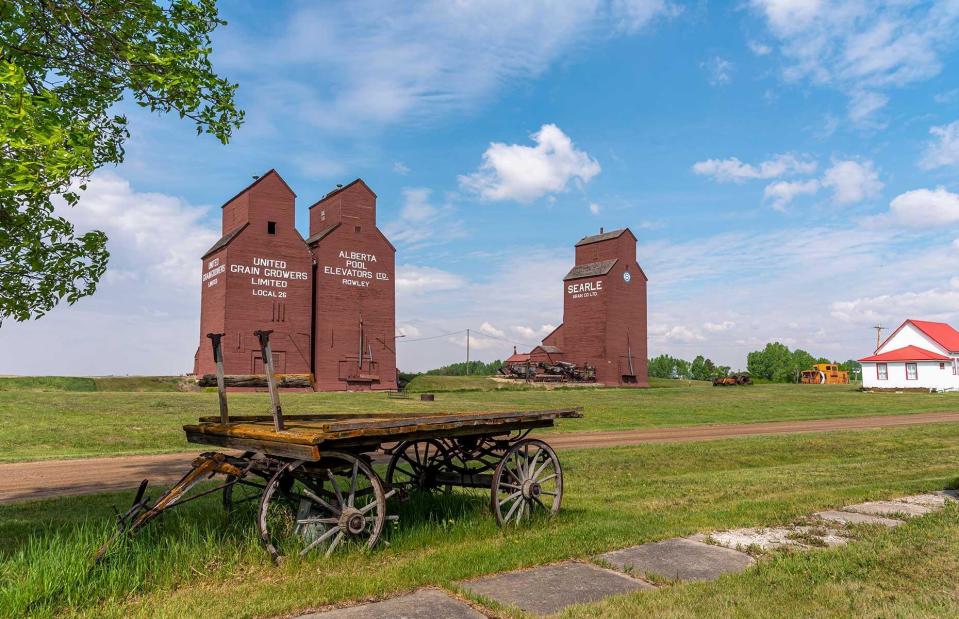
Jeff Whyte/Shutterstock
During summer you can join free guided tours to see the abandoned houses, stores and the stunning grain elevators. In town on the last Saturday of the month? The pizza night with live music is the best way to rub shoulders with residents and uncover the best stories and local legends.
Spinalonga, Greece
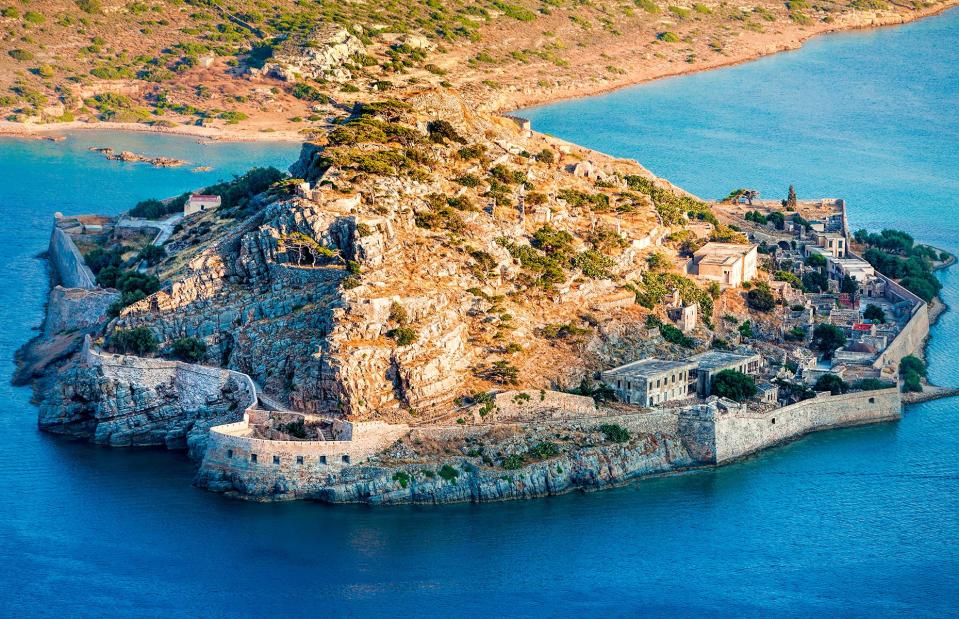
photoff/Shutterstock
Located in northeastern Crete, Spinalonga wasn’t always an island – during Venetian occupation, the coast was carved out for defensive purposes and a fort was built. In 1715, the Ottoman Turks took over the Venetian rule until the Cretan revolt at the end of the 19th century.
Spinalonga, Greece
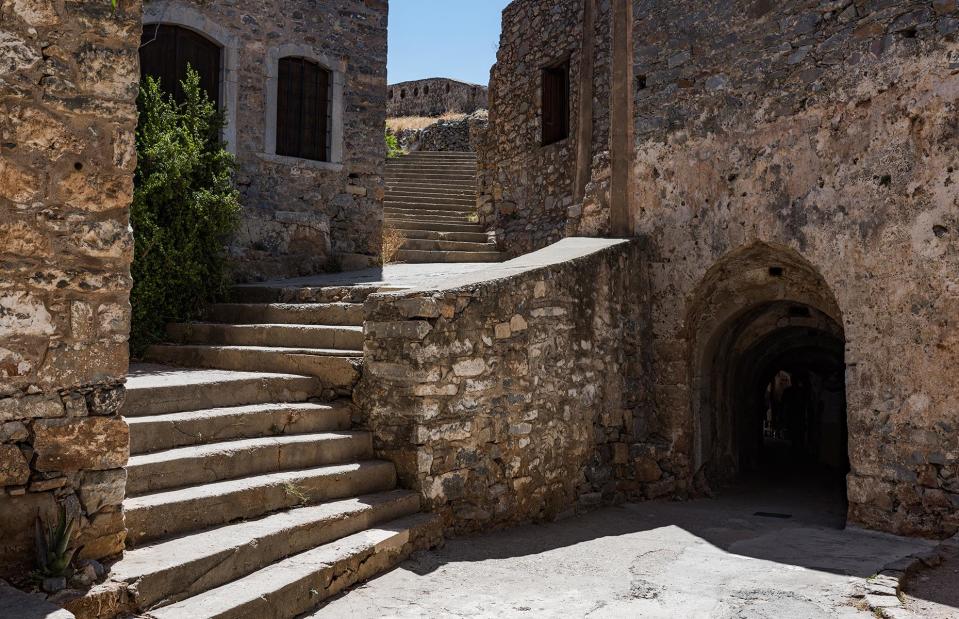
ZlataMarka/Shutterstock
From 1903 to 1957 Spinalonga was used as a leper colony – it was one of the last active leper colonies in Europe. Its last resident, a priest, left the island in 1962 and today the abandoned fortress is a popular tourist attraction.
St. Elmo, Colorado, USA
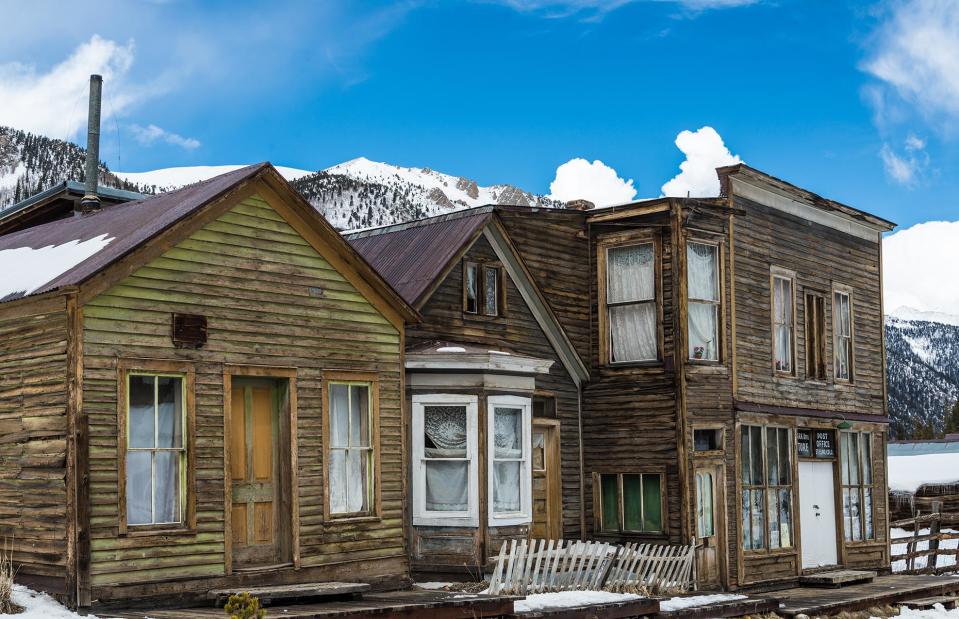
Phillip Rubino/Shutterstock
Founded in 1880, St. Elmo was home to almost 2,000 people, who worked in the gold and silver mining industry. As it slowly declined in the early 1920s, the railway service was discontinued in 1922 and residents left town. It is one of Colorado’s best-preserved ghost towns.
St. Elmo, Colorado, USA
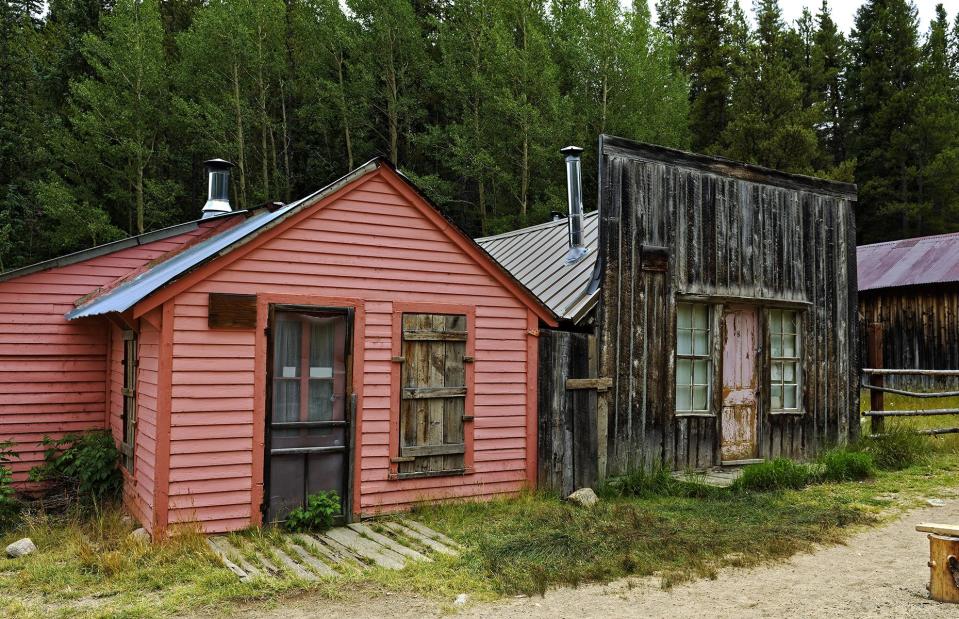
Barnes Ian/Shutterstock
It's currently a sought-after destination for many fishing enthusiasts thanks to the many excellent fishing spots along Chalk Creek, which runs through the town. Although many of the buildings are still intact, the town hall and a few others burned down in a fire in 2002. Buena Vista Heritage is currently working on restoring the buildings to their original state.
Craco, Italy
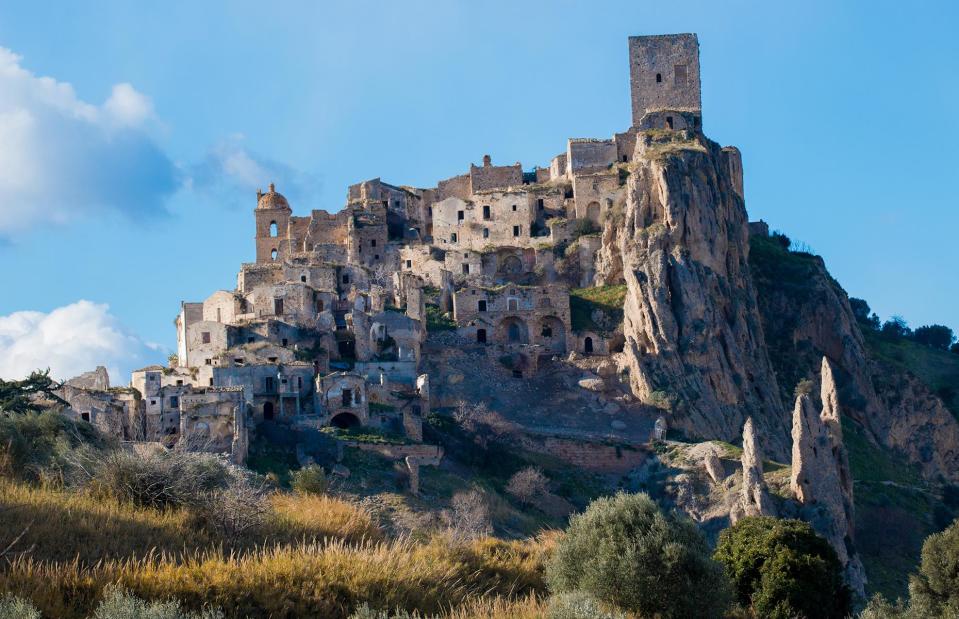
francesco de marco/Shutterstock
With a history stretching as far back as 540 BC, Craco sits atop a 1,300-foot-high (396m) cliff overlooking the Cavone River valley at the instep of Italy’s boot. After the town was evacuated due to a landslide in 1963, many residents decided not to return. A flood in 1972 worsened the situation and after an earthquake in 1980, the ancient site was abandoned completely.
Craco, Italy
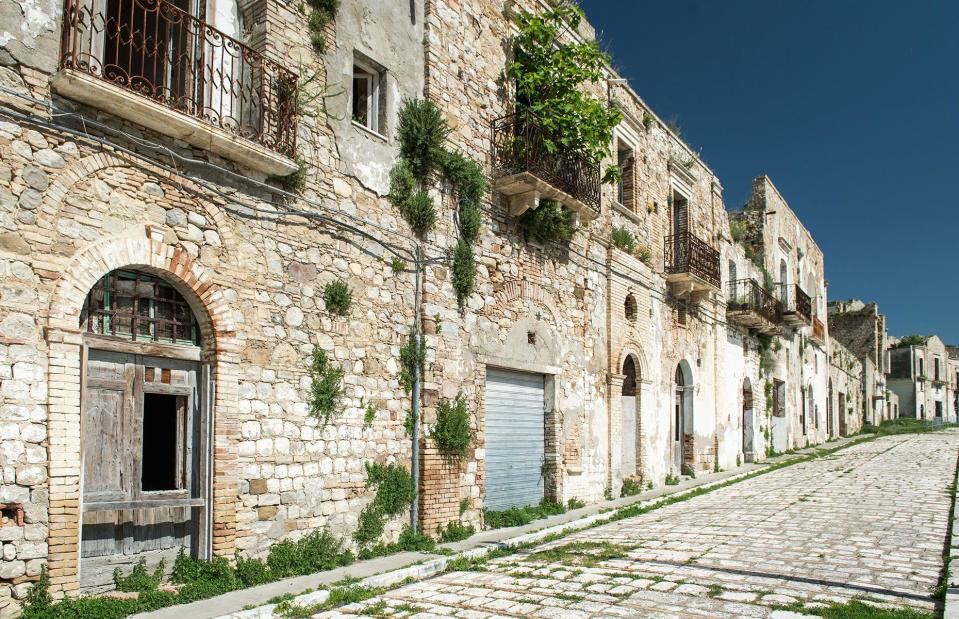
Massimiliano Marino/Shutterstock
The town has been featured widely in popular culture, especially in films. Mel Gibson’s controversial film The Passion of Christ was partly shot in Craco and a few scenes for the 2008 James Bond film Quantum of Solace were also filmed in the ghost town.
Belchite, Spain
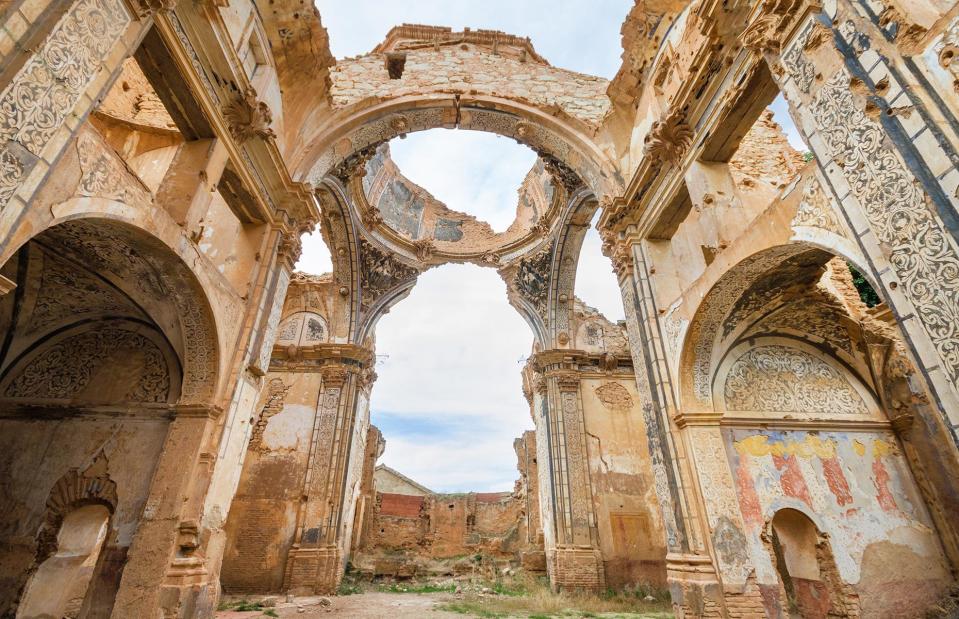
David Herraez Calzada/Shutterstock
Located near Zaragoza in the northeast of Spain, Belchite was almost completely destroyed 86 years ago during one of the bloodiest battles of the Spanish Civil War. After the war, it was decided the town should be left untouched and abandoned as a memorial to the 3,000 people who were killed there.
Belchite, Spain
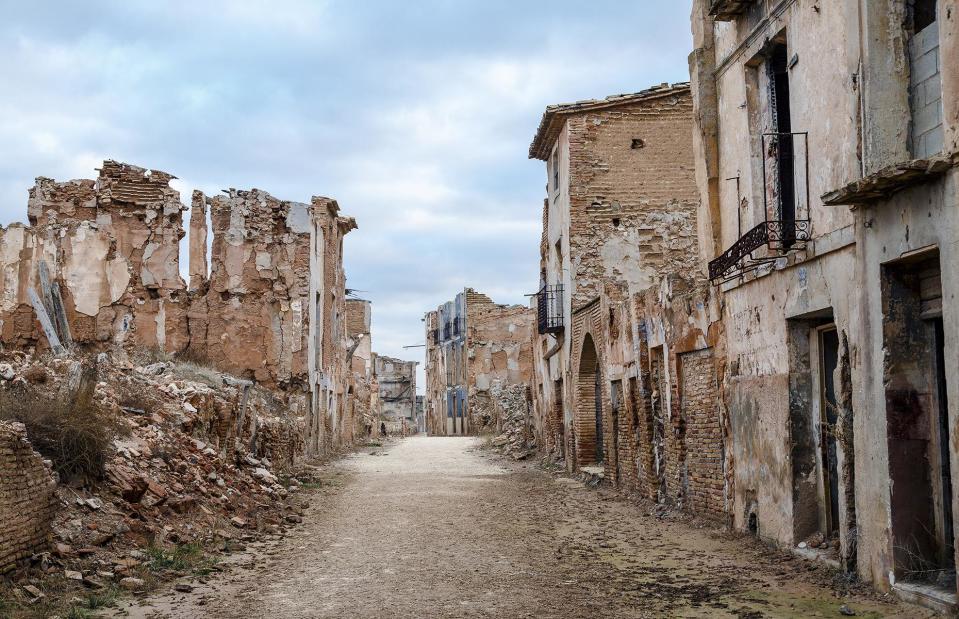
KarSol/Shutterstock
Belchite is thought to be one the most haunted towns in the world and, according to local farmers, the cries of a desperate boy looking for his mother can be heard at dusk. It was used as a filming location for Guillermo Del Toro’s 2006 Academy Award-winning Pan’s Labyrinth.
Bannack, Montana, USA
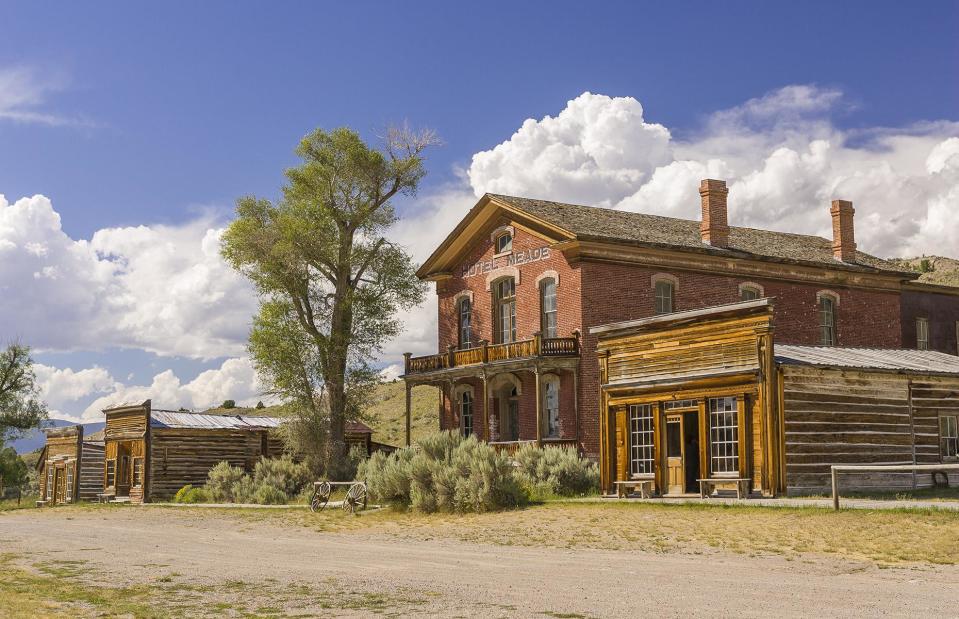
Rob Crandall/Shutterstock
Founded in 1862 and named after a local Native American community, Bannack was the site of a major gold deposit discovery. At its peak, the town had a population of around 10,000 and briefly served as the capital of Montana Territory in 1864. As the gold ran out in the mines, the town was slowly abandoned, with the last residents leaving in the 1970s.
Bannack, Montana, USA
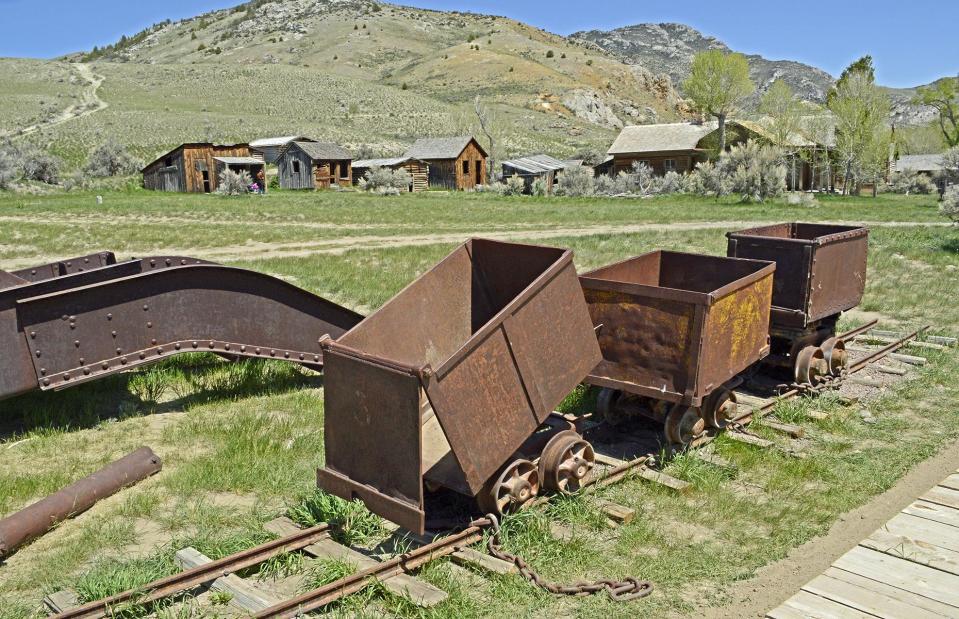
Tony Craddock/Shutterstock
A historical re-enactment known as Bannack Days takes place every year during the third weekend of July. For two days a year, visitors of Bannack are taken back in time to when it was a booming mining town during the Gold Rush. Part of the event is an old-timey breakfast served in the Hotel Meade – a well-preserved brick building from the late 1860s.
Döllersheim, Austria
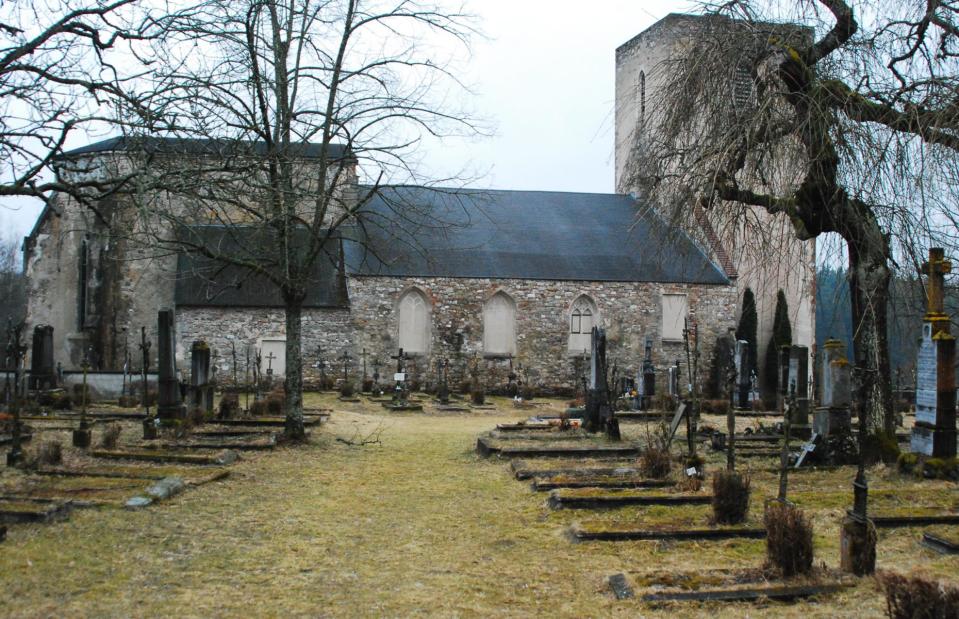
GuentherZ/Wikimedia/CC BY 3.0
Located in the north of Austria, near the border with Czech Republic, the first mentions of Döllersheim date as far back as the 12th century. In 1938, when Nazi Germany annexed Austria, Hitler ordered the evacuation of the town.
Döllersheim, Austria
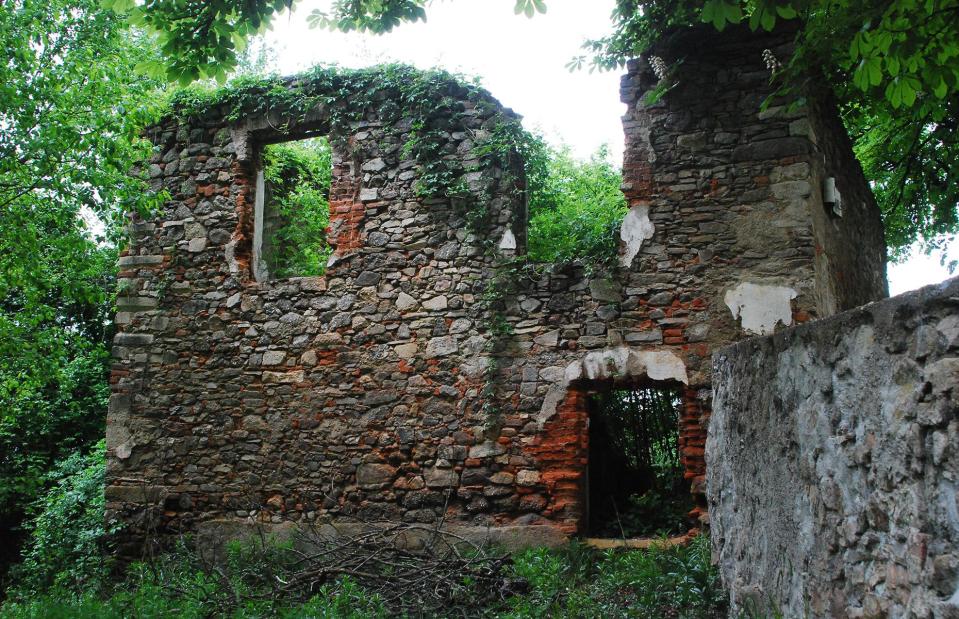
GuentherZ/Wikimedia/CC BY 3.0
A large Nazi military training area was established in Döllersheim and all the houses were bombed in 1941 as a part of a training exercise. After Nazi Germany lost the war, the training ground was seized by the Soviet Army and has remained a military exclusion zone, now under the rule of Austrian Armed Forces. Visitors are permitted to visit the main square, as well as the ruins of some of the churches and surrounding graveyards.
Tianducheng, China

STR/AFP/Getty Images
Built to resemble the French capital, Tianducheng in the Zhejiang Province in eastern China has its own 354-foot-tall (108m) replica of the Eiffel Tower and covers an area of around 12 square miles. Built in 2007, it can accommodate more than 10,000 inhabitants but is pretty much abandoned, save for the 2,000 people who work in the nearby French-themed amusement park.
Tianducheng, China
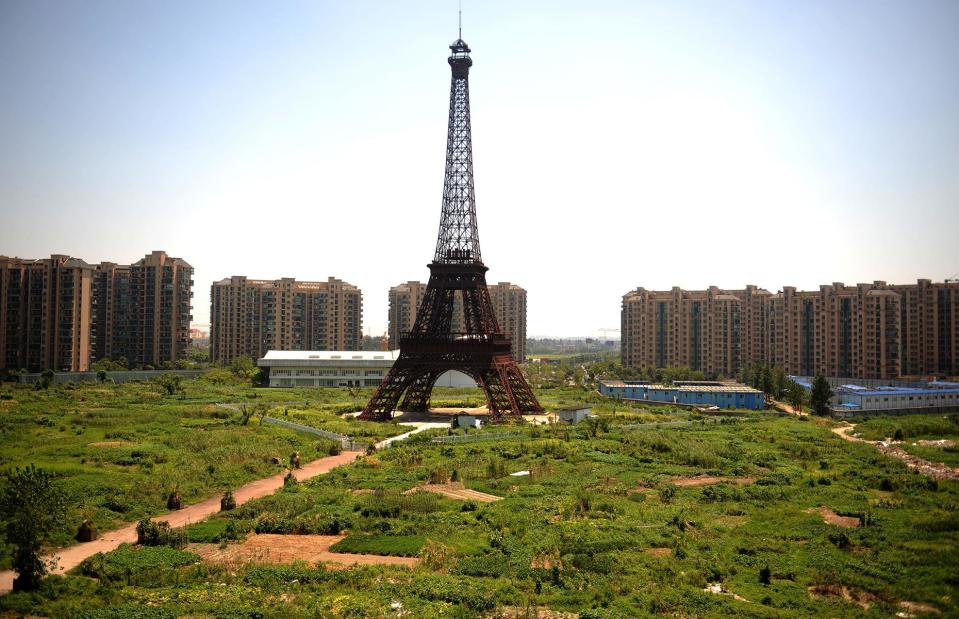
STR/AFP/Getty Images
The housing estate features Parisian architecture, grand fountains, public parks and has wide boulevards and avenues. Today, it’s a popular destination for tourists from China and the world.
Kayaköy, Turkey
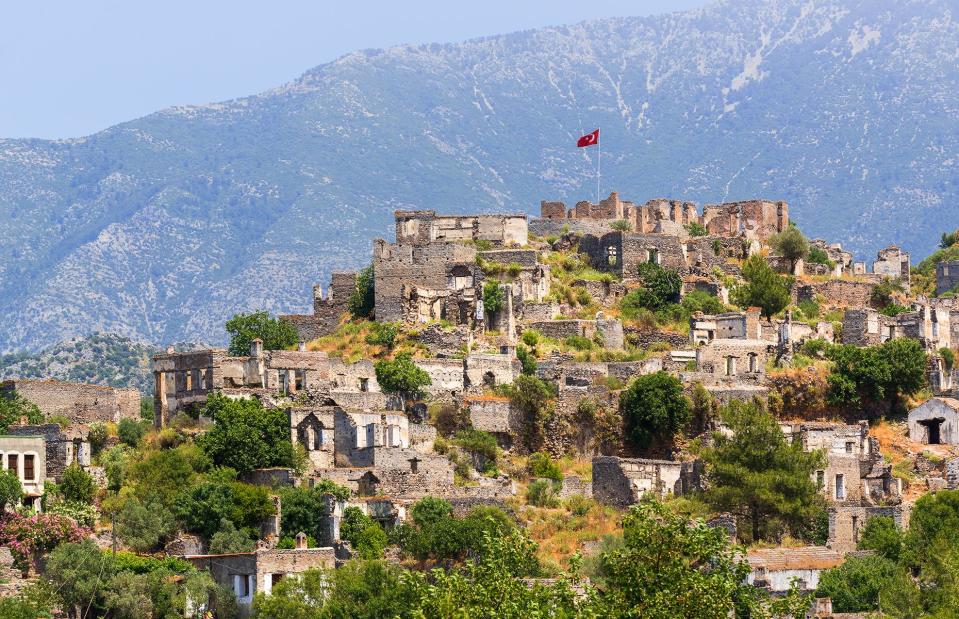
GrinchenkovaAnzhela/Shutterstock
Around 10,000 Orthodox Greeks lived in Kayaköy until 1923, when they were exiled to Crete in the aftermath of the brutal Greco-Turkish war. In 1957, a huge earthquake wreaked destruction on the town, but around 350 derelict homes still remain today. Scramble through the rugged streets, up to the top of the town, from where you can admire the vibrant blue waters of Ölüdeniz far below.
Kayaköy, Turkey
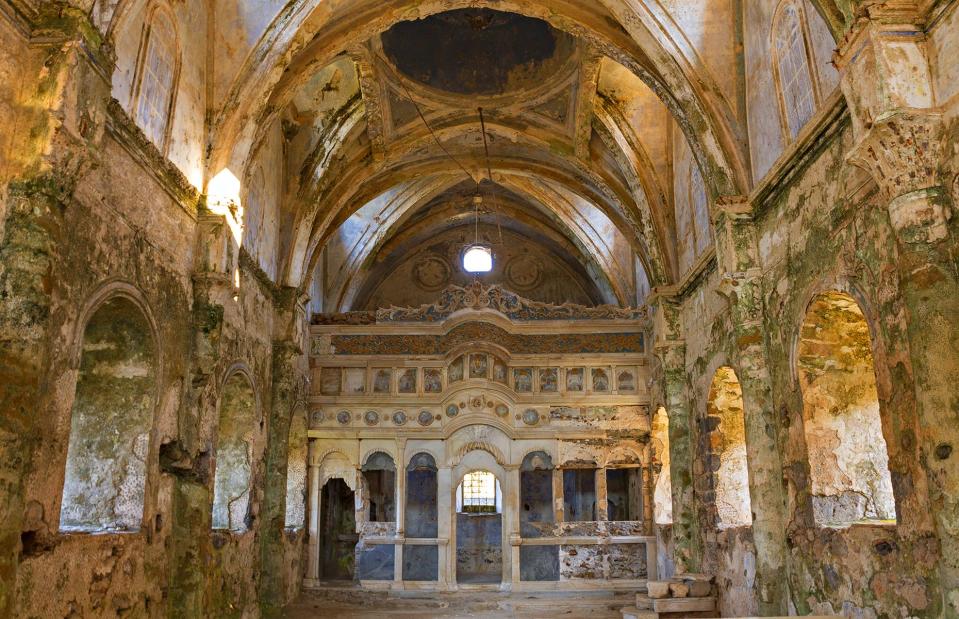
MehmetO/Shutterstock
In Lower Church – one of the two remaining religious buildings – you can still see the faded murals and arched ceilings, giving you a flavour of how magical Kayaköy once was. Eerily, there are ancient human bones inside.
Al Jazirat Al Hamra, United Arab Emirates
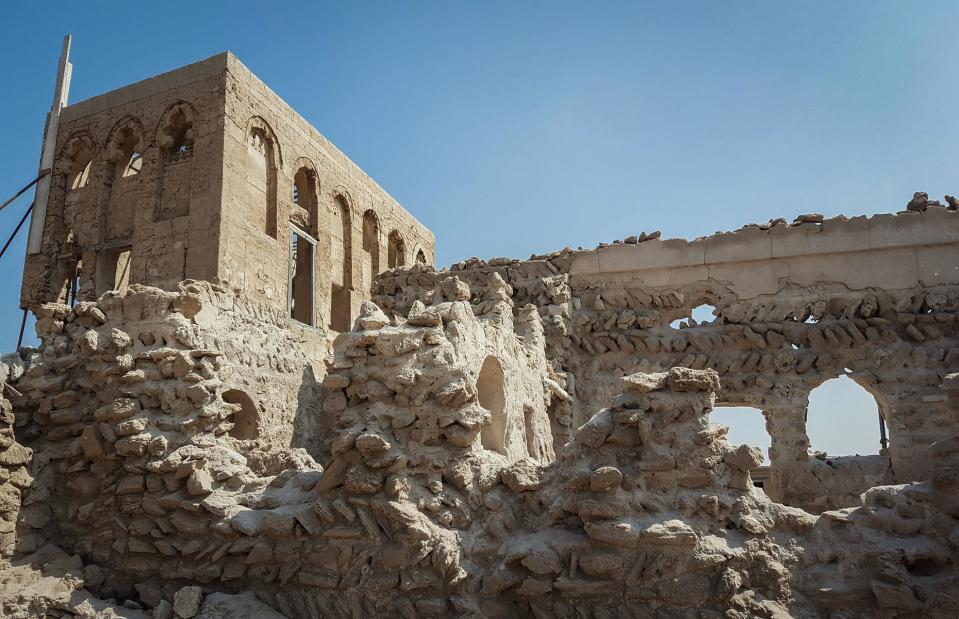
Lottie Gross
Al Jazirat Al Hamra, in Ras Al Khaimah, was once a vibrant pearling village. It's uncertain whether the 2,400 inhabitants left their homes because of tribal disputes, or because they were tempted by the promise of wealth in gold-rich Abu Dhabi, but by 1968 the town was abandoned.
Al Jazirat Al Hamra, United Arab Emirates
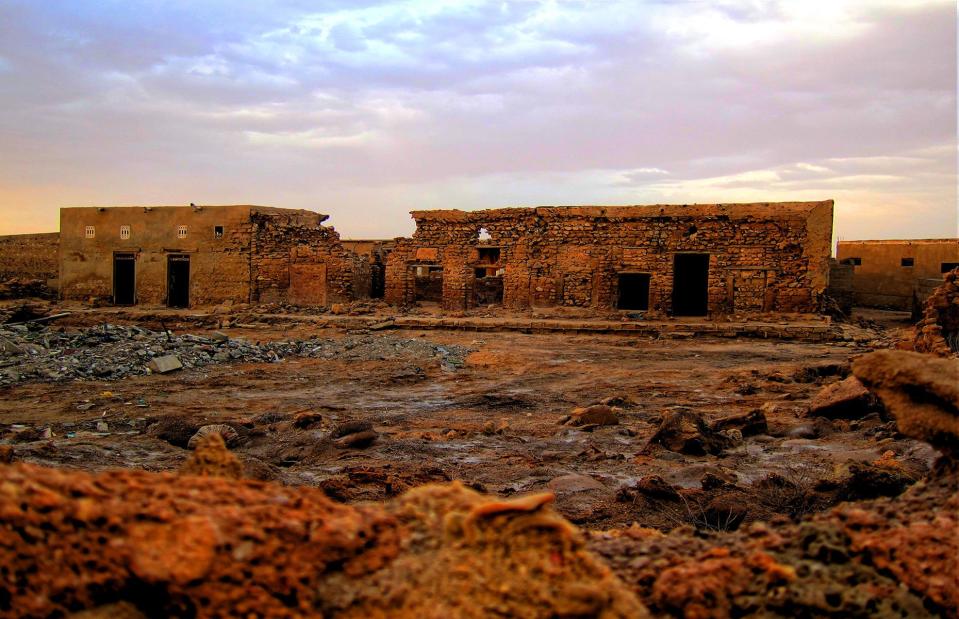
NitinG/Shutterstock
Now the coral stone buildings lie empty, coated in grains of rusty red desert sand. Some doors are locked, but visitors can peer into the belly of the buildings to see abandoned classrooms and bedrooms. The mosque still stands, too. Known locally as the Ghost Town, Al Jazirat Al Hamra has a reputation for being haunted by evil spirits. And whilst it may be empty, it hasn’t been forgotten by its former inhabitants. They reunite here once a year for a party, to celebrate their heritage.
Hashima Island, Japan
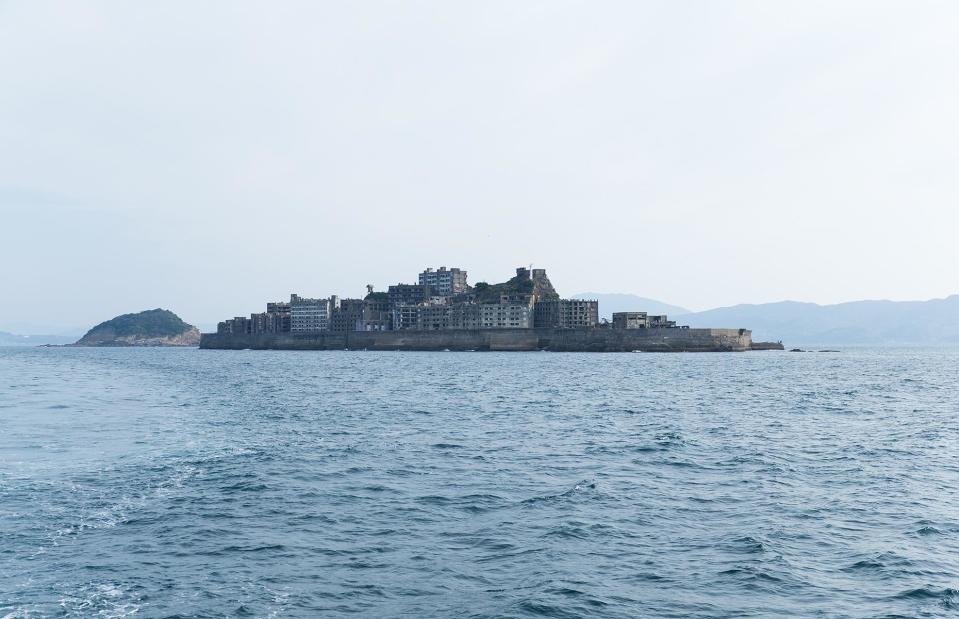
Leungchopan/Shutterstock
This tiny island, commonly called Gunkanjima, just off the coast of Nagasaki, was once the site of an undersea coal mine. So rich were the coal resources that by the 1950s some 6,000 miners were squeezed ashore, housed in ten-storey high rises. It’s also known as Battleship Island because of its shape.
Hashima Island, Japan
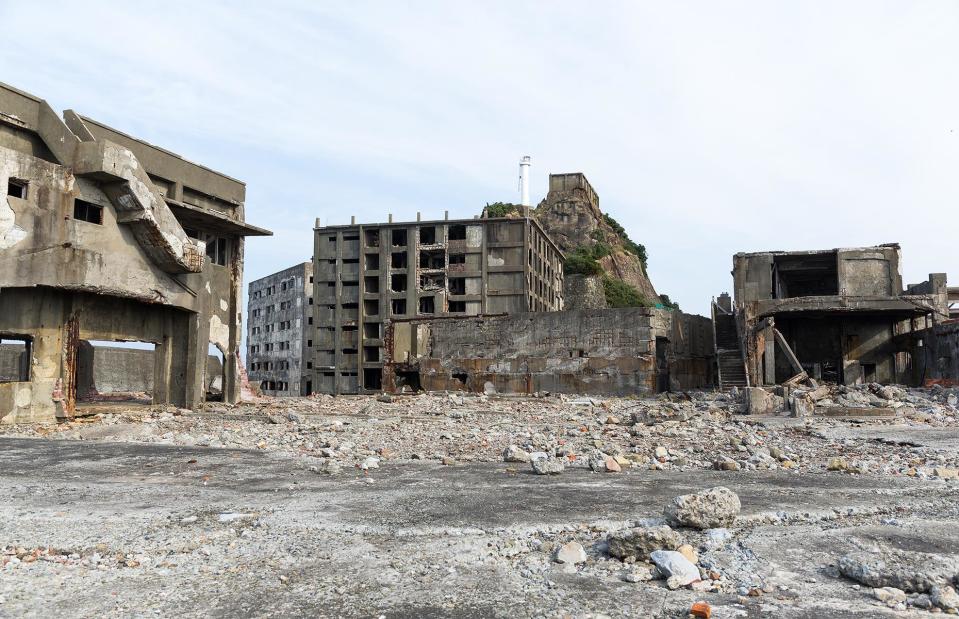
Leungchopan/Shutterstock
By the 1970s the coal supply had run dry, and in 1974 Gunkanjima was eventually closed. But in 2009 it was reopened, and was famously used in 2012 James Bond film Skyfall as the location where Bond confronts his nemesis, Raoul Silva, in his creepy HQ. Today, the decaying buildings are being reclaimed by vegetation, and the frequent typhoons have made them unsafe to enter. You can visit the island by organised boat tour, which will give you access to a fenced walkway.
Bodie, California, USA
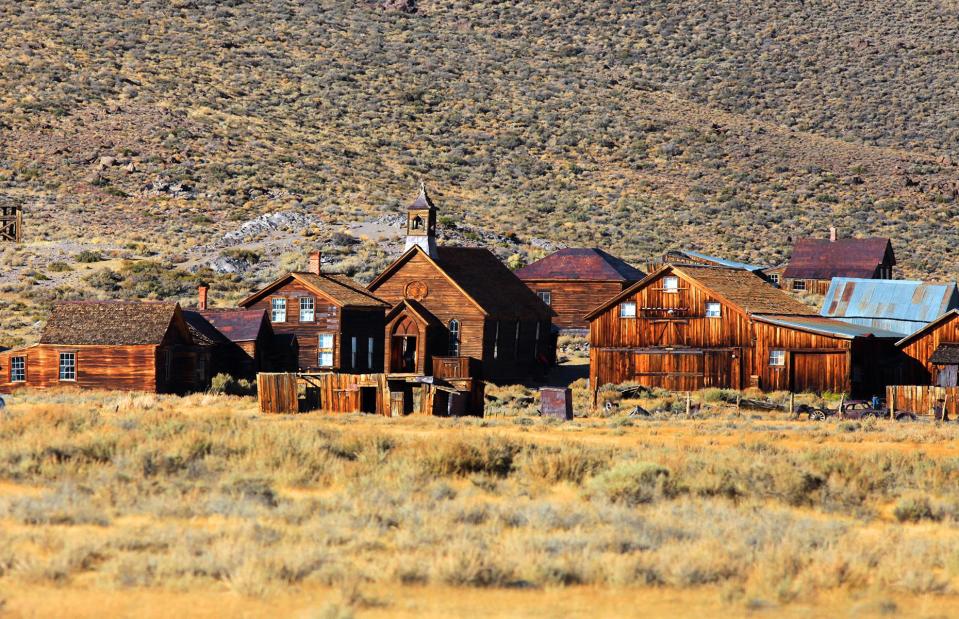
SNEHIT/Shutterstock
In its heyday, this California gold mining town had 10,000 inhabitants and 65 saloons, gambling halls, opium dens and brothels. The frequent outbreaks of violence and murders earned Bodie the dubious reputation as 'the most lawless' mining camp in the Wild West.
Bodie, California, USA
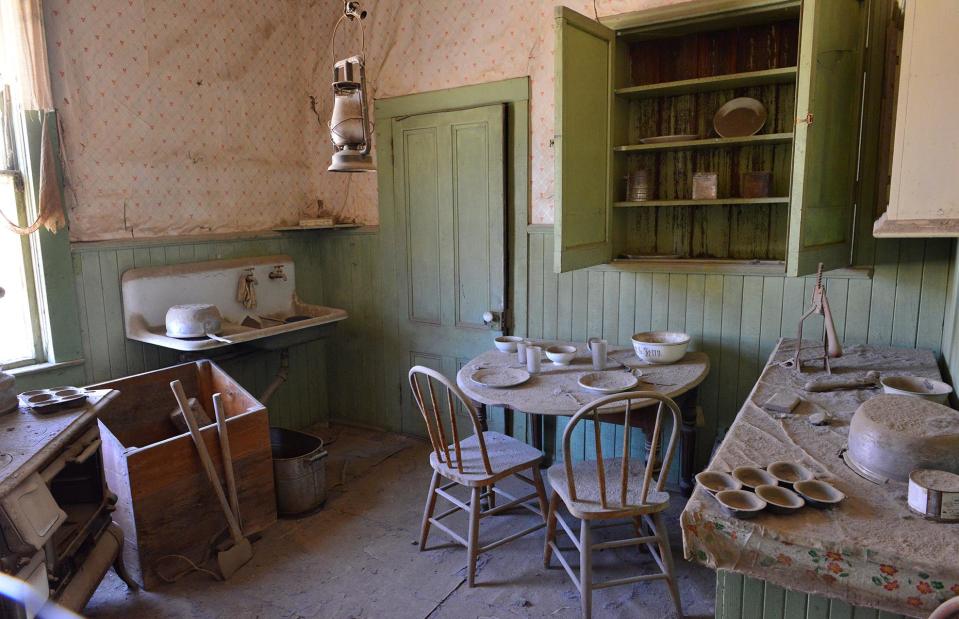
PaulBriden/Shutterstock
Over time, the mines became too expensive to run and in 1932 a huge fire razed 90% of the town to the ground. The 200 buildings that remain are now preserved as ruins – tables are still laid with crockery and, in the school, books lie scattered on desks. Visitors aren’t allowed inside the houses and the church, but there are daily tours of the old stamp mill where you'll learn how the ore was crushed so gold could be extracted and turned into bullion bars.
Oradour-sur-Glane, France
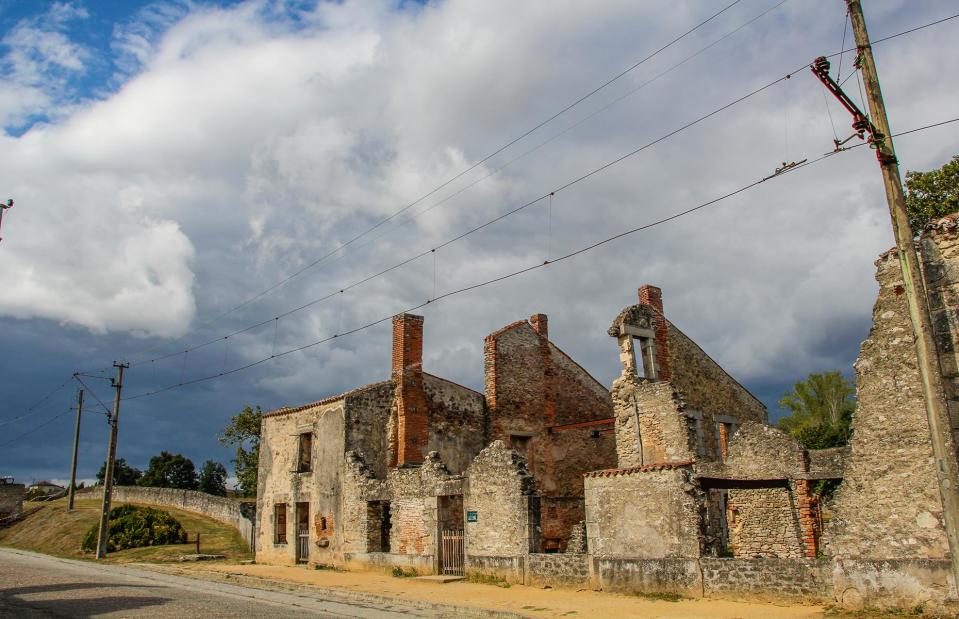
IvoAntoniedeRooij/Shutterstock
The village of Oradour-sur-Glane in France is a gut-wrenching reminder of the atrocities of the Second World War. In June 1944, German forces entered the village and swept the women and children into the church and the men into barns. They then gunned and burnt them alive, killing 642. Today, Oradour-sur-Glane is a memorial to those who perished. Rusted cars, including the Peugeot 202 the mayor drove before his brutal death, still sit on the roads, while sewing machines, pitchers and pans still lie scattered where they were on that fateful day.
Oradour-sur-Glane, France
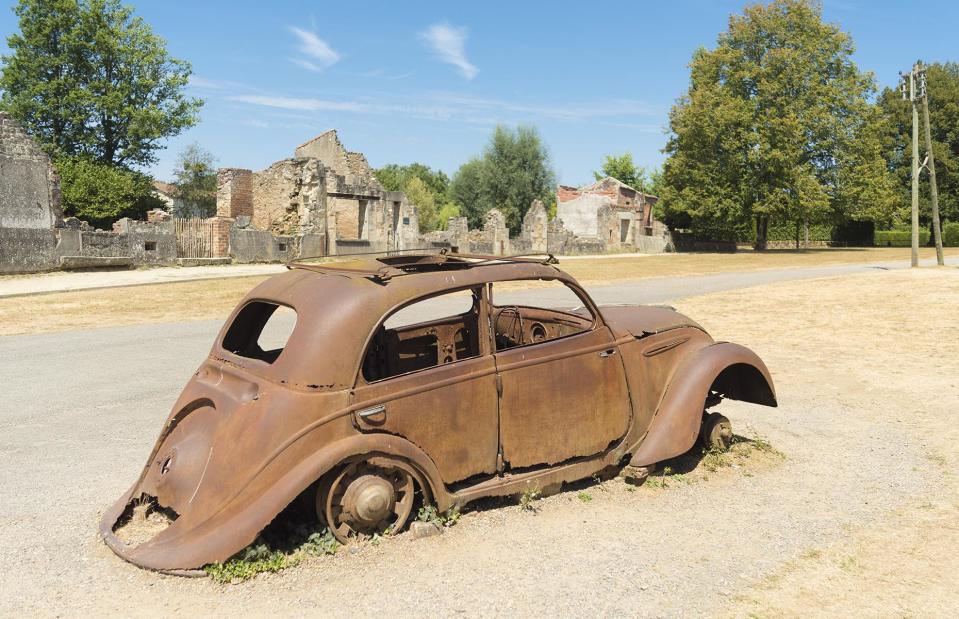
Hansengbers/Shutterstock
The nearby museum is well worth a visit to give you an understanding of the history, then you can work your way through the town in respectful silence. In the church, a pushchair lies by the altar, untouched since the massacre. It’s a heartbreaking reminder of the darker side of humanity.
Rodalquilar, Spain
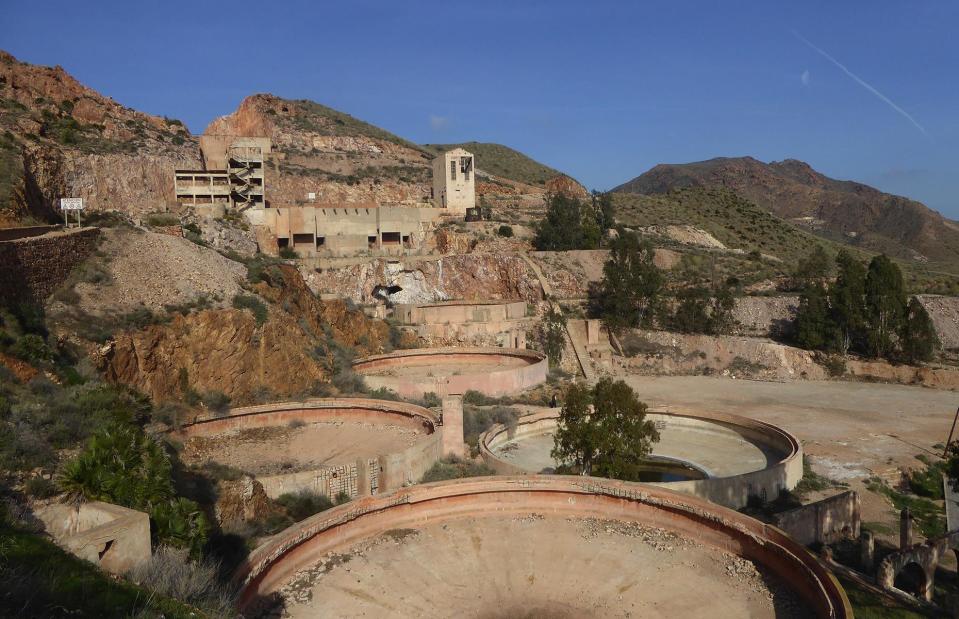
InnTravel
If you haven’t been to Rodalquilar, chances are you’ve seen it in the movie Indiana Jones and the Last Crusade. From 1864-1990 this was a bustling village with 1,400 people and one of the biggest gold mines in western Europe.
Rodalquilar, Spain
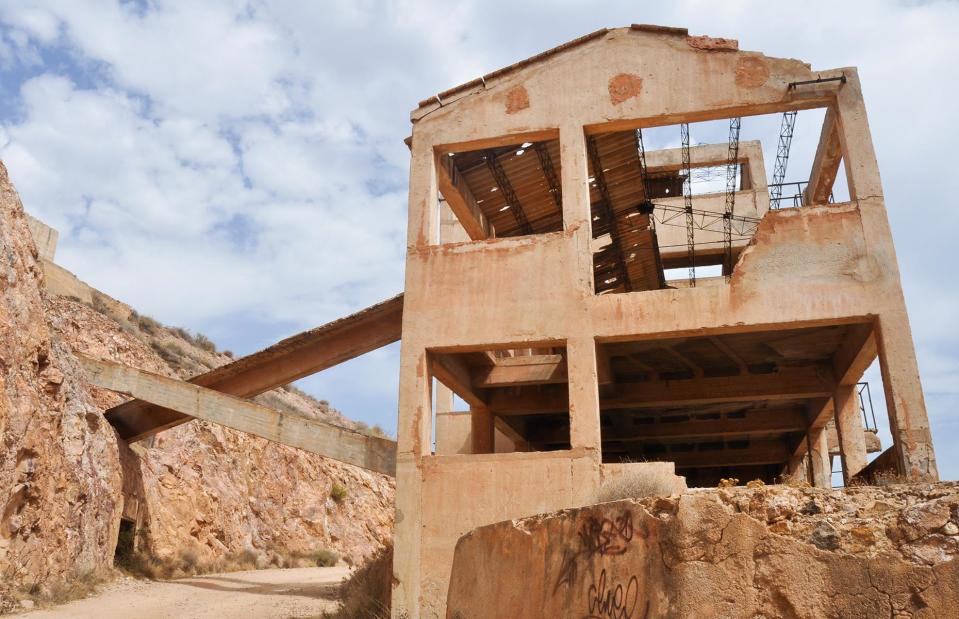
Noradoa/Shutterstock
In the 90s, the mine eventually ground to a halt for good. Travellers today can visit the derelict homes and see the old mining tunnels, plus there’s a museum that explains the process of extracting gold.
Poggioreale, Sicily, Italy
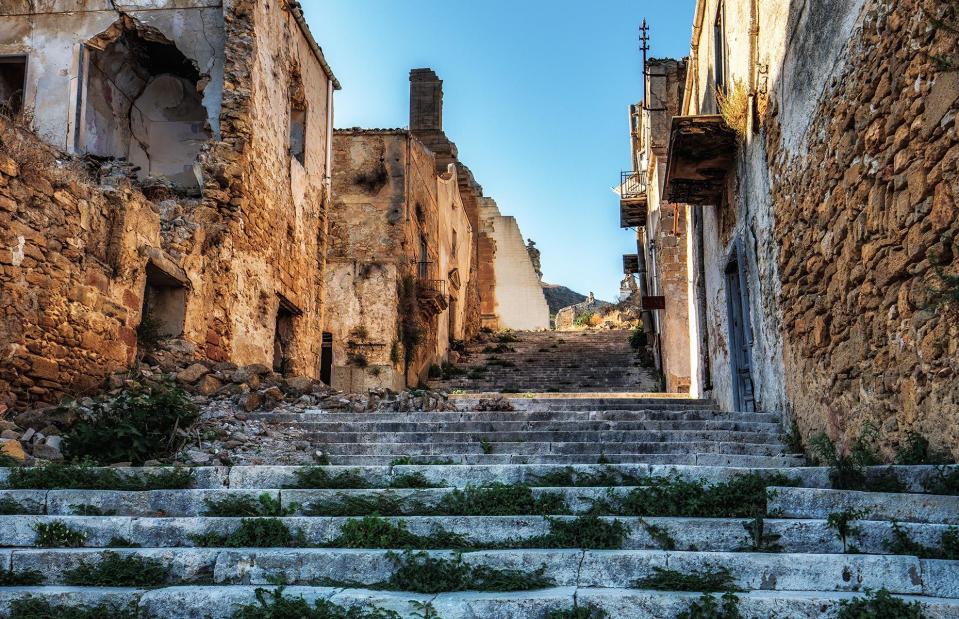
AndreasZerndl/Shutterstock
When a violent earthquake rocked Poggioreale in Sicily in January 1968, the devastated town was abruptly abandoned, and the survivors rebuilt their community across the valley. There’s no ticket office or museum here so you can freely explore the hauntingly deserted streets, overgrown with weeds.
Poggioreale, Sicily, Italy
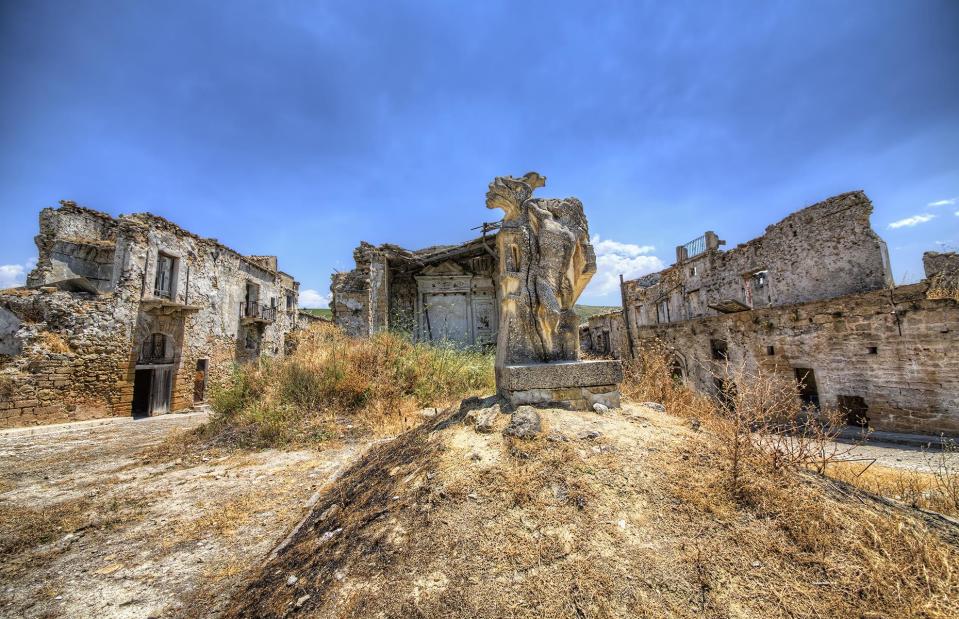
RolfEStaerk/Shutterstock
Whilst the yellow-stone houses may not be safe to enter, when you peer through doorways you can catch glimpses of life as it was before tragedy struck, with 60s-era magazines and bottles lying on surfaces. The town’s crumbling theatre, cathedral, bell tower and post office are still visible – in the post office, you can see a painting of telegraph wires on the wall.
Kolmanskop, Namibia
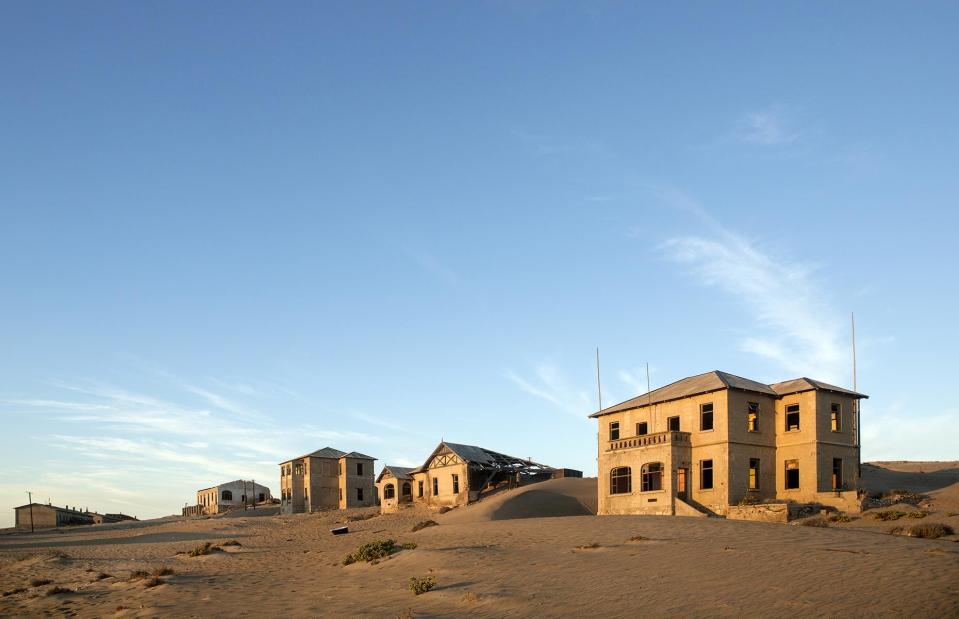
2630ben/Shutterstock
In the early 1900s, over 300 German and 800 native miners settled at Kolmanskop in the Namib desert. They were lured here by the promise of diamonds, which had been discovered beneath the orange sands. The proliferation of gems (at one point 11% of the world’s diamonds were produced here) meant there was plenty of cash, so the mine soon built a school, bakery, sports hall and even a hospital. Opera singers were flown in to perform at the spectacular ballroom and trains brought in enough fresh water for residents to keep vibrant gardens, incongruous in the dry desert.
Kolmanskop, Namibia
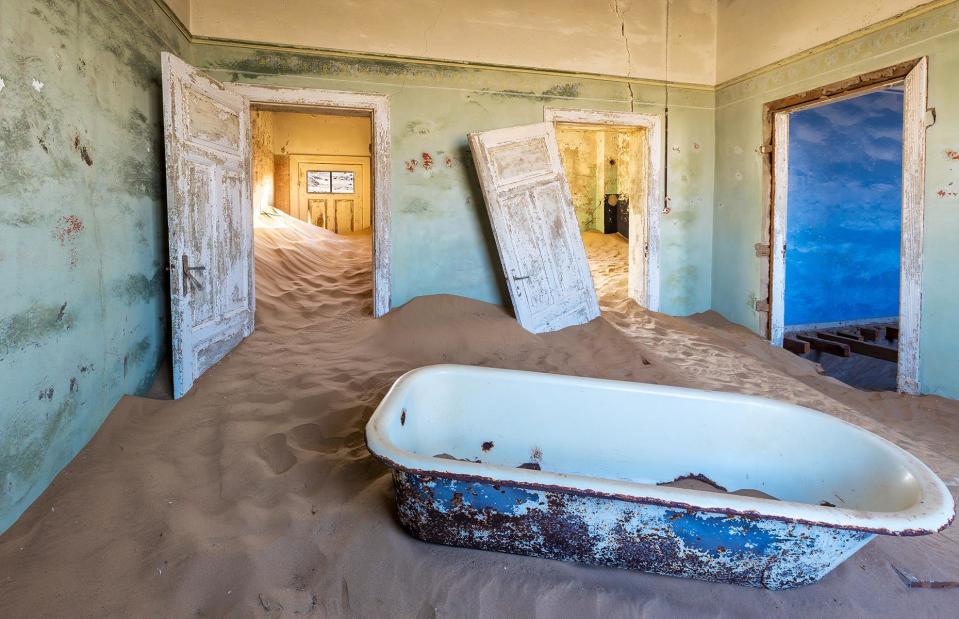
Kanuman/Shutterstock
Then in 1928, a far bigger diamond deposit was discovered south of Kolmanskop, and many of the inhabitants left in their search for treasure. By 1956, the town was completely abandoned and today, the shifting red desert sands sweep into the decrepit houses. To get access to Kolmanskop, you’ll need to buy a permit at the gate. There are daily guided tours, but you can explore the buildings on your own afterwards too.
Bennett, British Columbia, Canada
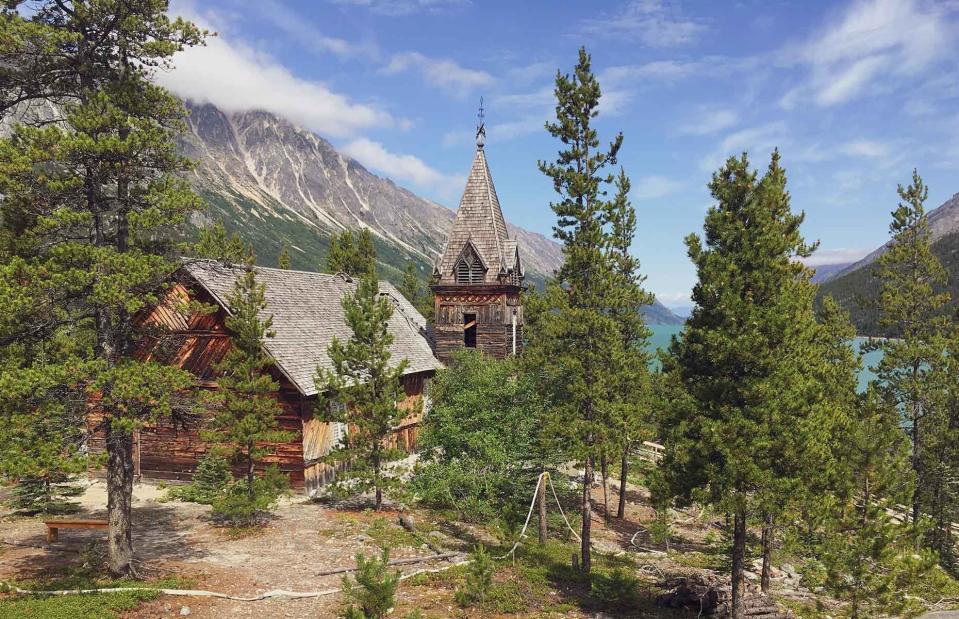
InEthosDesign/Shutterstock
Located on Lake Bennett, this town started life as a boat-building hub in 1897, growing to a proper town with 15,000 people who flowed in during the Klondike Gold Rush. The town was vitally important during the construction of the White Pass and Yukon railway. But the completion of the line in 1900 saw an end to the town’s purpose and it fell into decline. All that remains is St Andrew’s Church and the ghostly reminders of its previous fortune, such as wharf pilings and scattered glass bottles.
Bennett, British Columbia, Canada
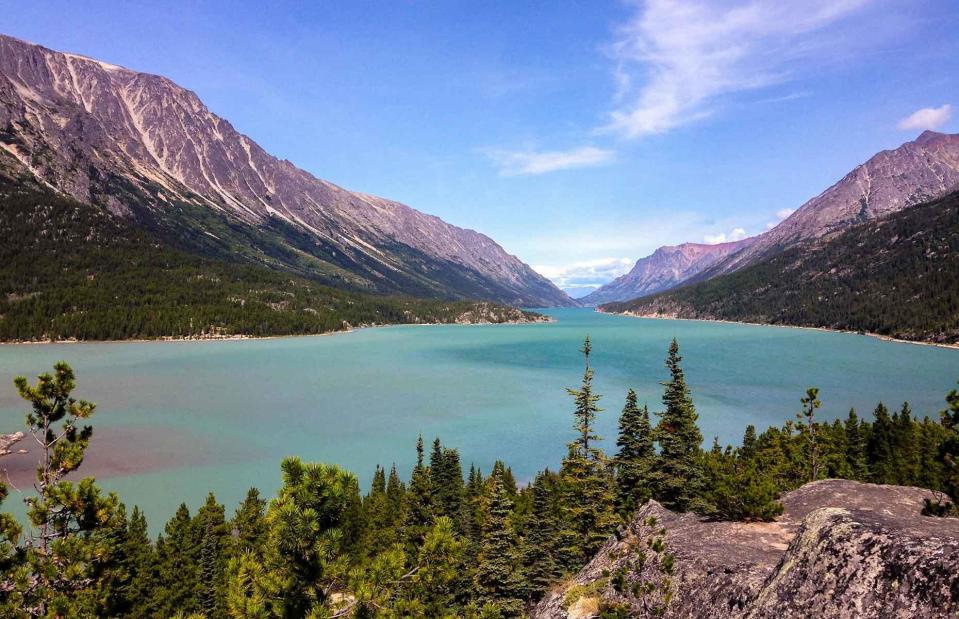
Pam Joy/Shutterstock
Nearly 120 years on it’s possible to camp at Lake Bennett, which is now managed by Parks Canada and part of the Chilkoot Trail National Historic Site. Other things to see in the area include a stampeder cemetery, where some early Gold Rush-era pioneers are buried. It’s a remote place though, with no amenities, so it suits more experienced campers.
Gwalia, Western Australia, Australia
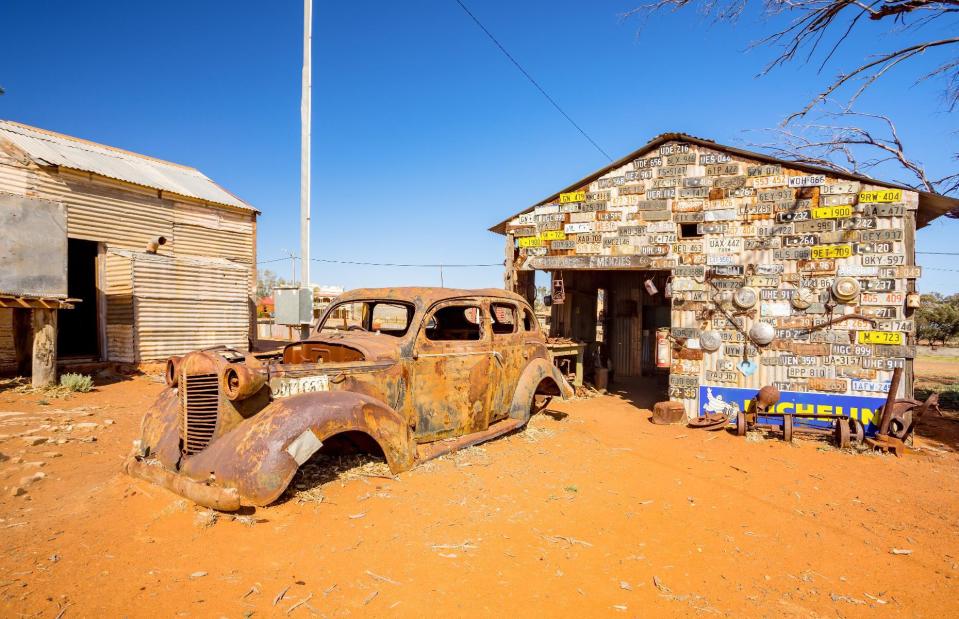
bmphotographer/Shutterstock
Described as a "living ghost town", Gwalia is one of Australia's fallen mining settlements. In a familiar tale, a community of miners mushroomed here in the late 1890s after gold was discovered in the area and the Sons of Gwalia mine was built. At its peak, the town of Gwalia had around 1,200 residents. But by the 1960s, the writing was on the wall: the mine, which had been in decline for decades, closed in 1963, and the 1,000-plus-strong population plummeted to around 40 people.
Gwalia, Western Australia, Australia
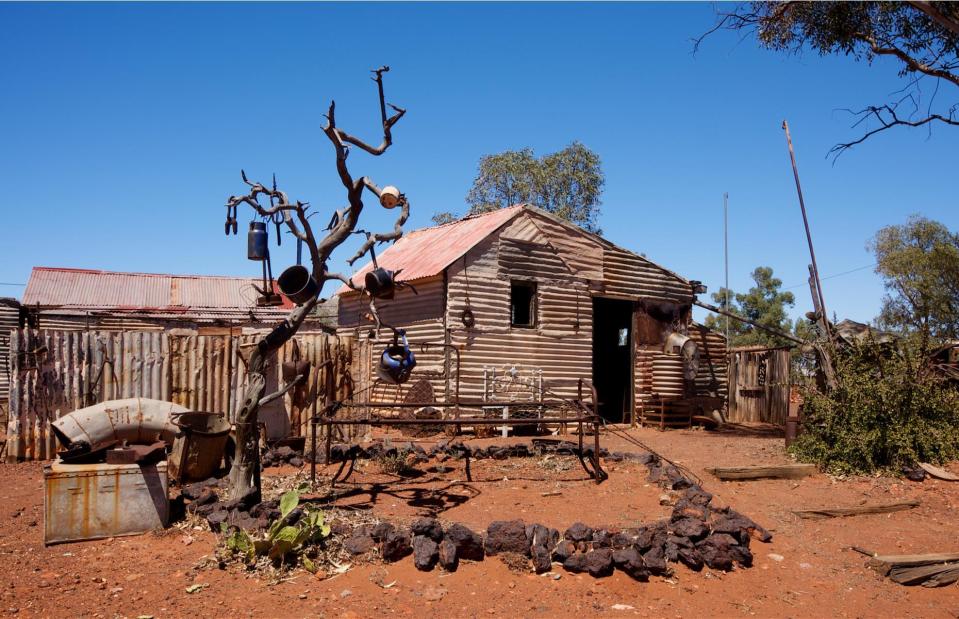
Sally Robertson/Shutterstock
Today, visitors can wander between the deserted buildings and imagine what life would have been like when Gwalia was at its height. You'll see Australia's first government-owned hotel, a collection of 19th-century mining buildings and a huddle of timber, iron and hessian cottages. You can also pore over an impressive collection of relics from Gwalia's past, including photos, machinery and period furniture.
Pyramiden, Norway
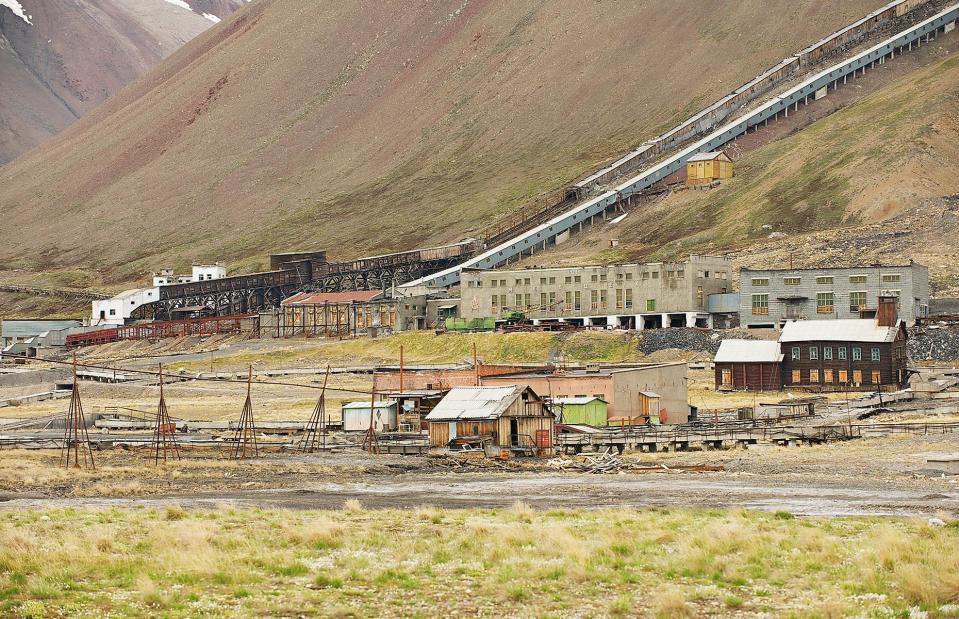
Dmitry Chulov/Shutterstock
Founded as a coal-mining community by Russian settlers in 1910, the remote town on the archipelago of Svalbard had a population of over 1,000 people. In 1927 it was sold by private Russian owners to the Soviet Union, who successfully continued mining until 1998, when the last resources were extracted.
Pyramiden, Norway
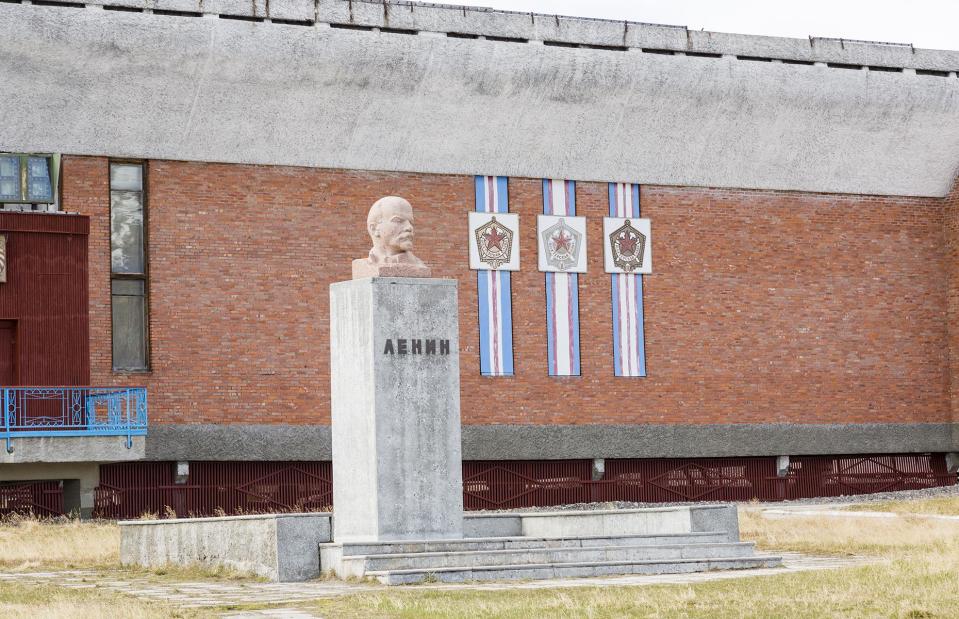
Fredy Thuerig/Shutterstock
The settlement was abandoned in a hurry, so things remain largely as they were. Pyramiden is home to the world’s northernmost grand piano, the northernmost swimming pool and the northernmost monument to the Soviet leader Vladimir Lenin.
Kennecott, Alaska, USA
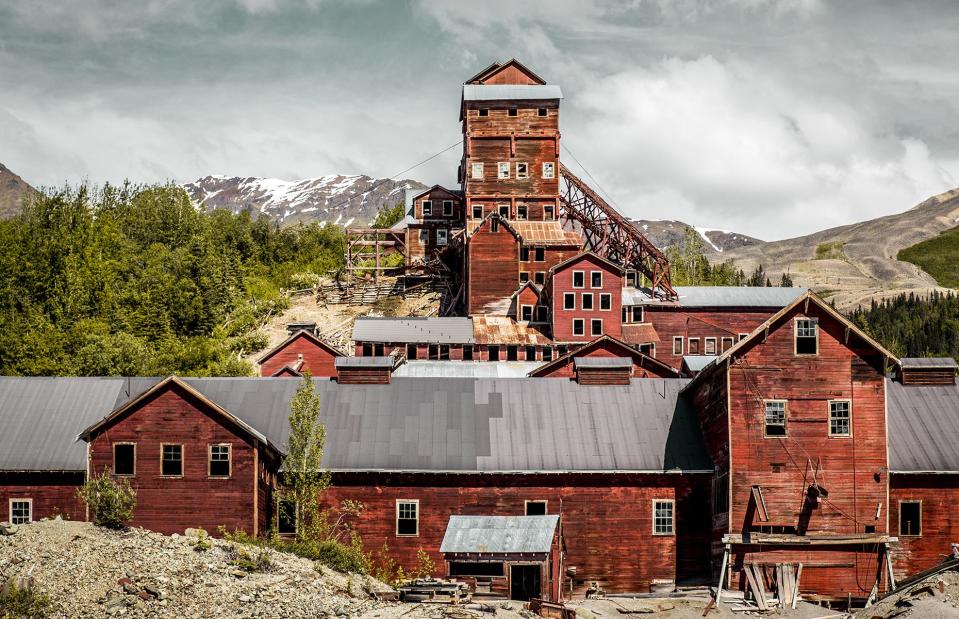
Emma Rogers/Shutterstock
Located about 6.5 miles (10km) east of the Kennicott Glacier, Kennecott was a mining camp, central to several copper mines. The town was built in 1911 and by 1916 the mines produced copper ore valued at £24 million ($29.5m). However, the high-grade ore started to run out in the late 1920s and the first mine closed in 1929, with the rest following the same fate. The last train departed from Kennecott on 10 November 1938, leaving it abandoned.
Kennecott, Alaska, USA
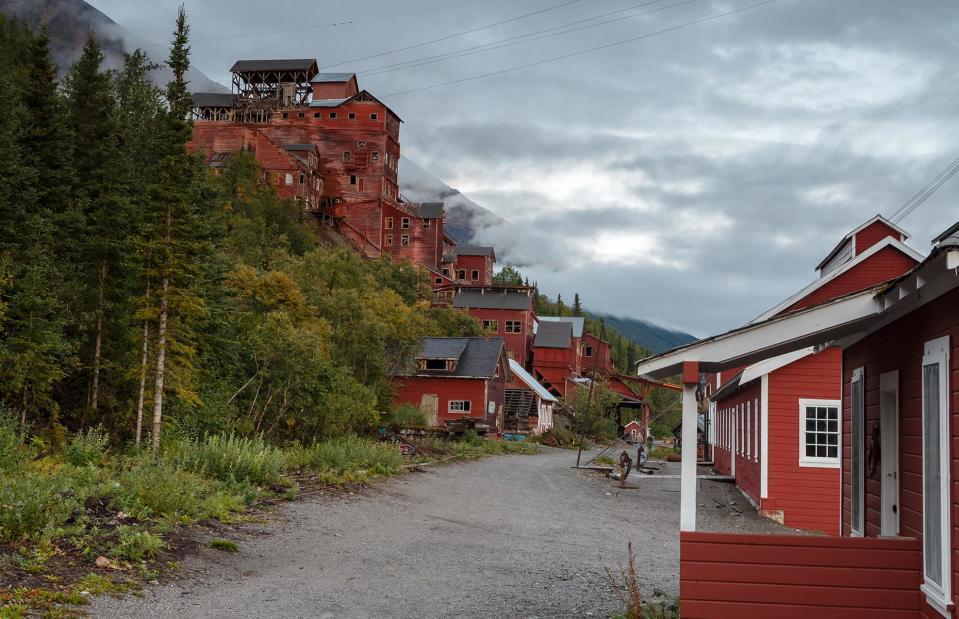
Menno Schaefer/Shutterstock
In 1955 a party of geologists was sent to the mines surrounding Kennecott to determine whether there were any resources left to mine and, after no new copper reserves were found, the town remained abandoned. Today, it's a national historic site run by the National Parks Service and is popular with travellers exploring Alaska.
Rhyolite, Nevada, USA
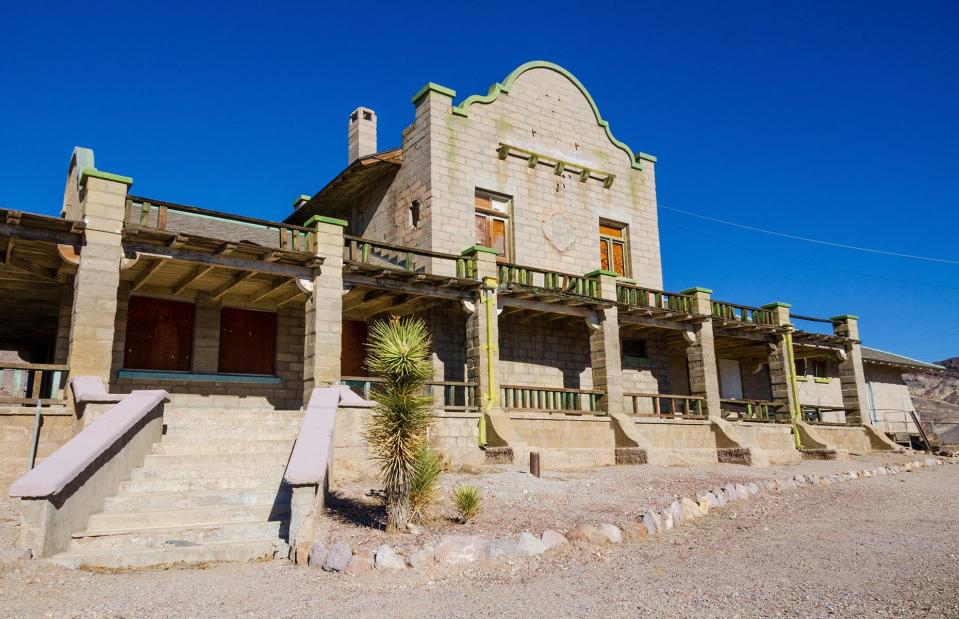
Zack Frank/Shutterstock
The tale of Rhyolite is the classic Western boom-to-bust story: quartz was discovered in the remote hills of southern Nevada and mining camps mushroomed across the region, as prospectors and workers poured in. Rhyolite soon flourished, building up around the thriving Montgomery Shoshone mine, and the town became known for its glittering social scene, which included parties, sports games and music shows.
Rhyolite, Nevada, USA
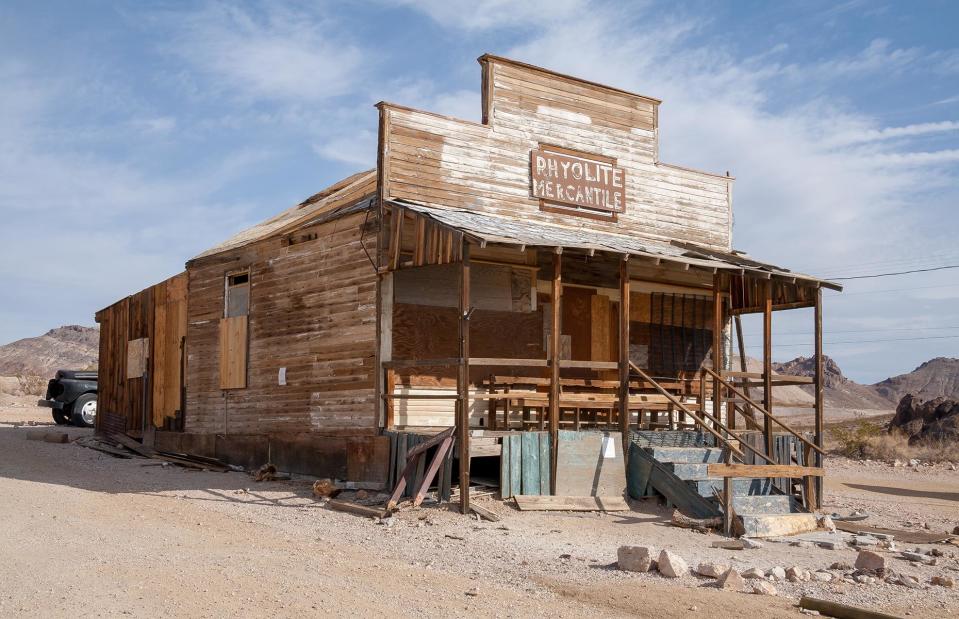
Laurens Hoddenbagh/Shutterstock
The financial Panic of 1907 sounded an early death knell for the town, and mines began to fold in the years that followed. The mighty Montgomery Shoshone mine and mill ultimately closed in 1911 and power was shut off by 1916. Residents leaked out of the town until it was totally abandoned. Rotting remnants include the old mercantile (pictured), a crumbling bank building and the old jail.
Golden, Oregon, USA
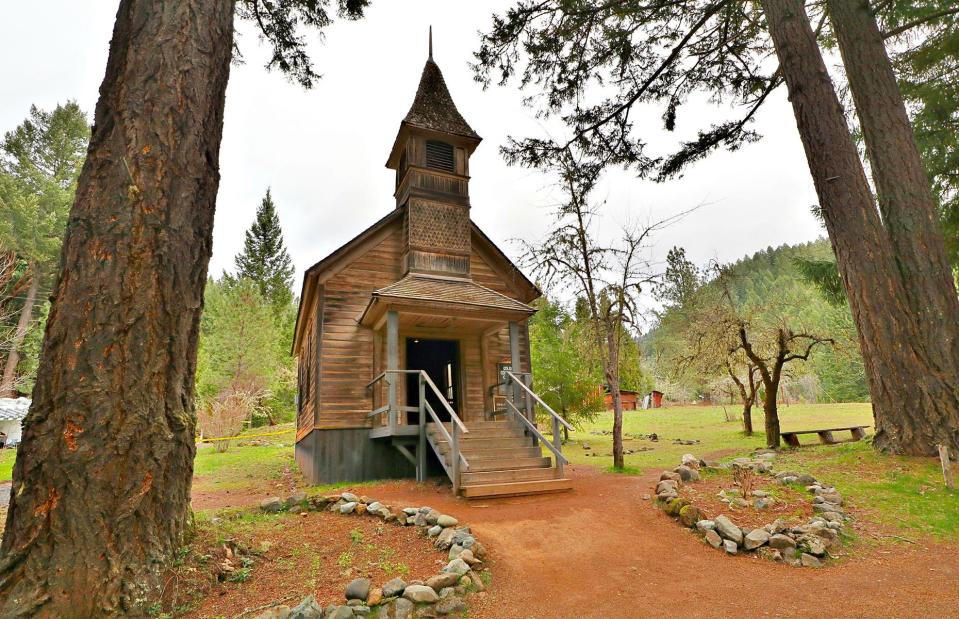
Jinxie W/Shutterstock
This diminutive abandoned town spreads out in southwestern Oregon and includes some striking deserted buildings. Workers flocked to the town in the 1800s and it was soon home to around 100 people. But Golden was a little different to most mining boom towns – it stood out for its lack of saloons and watering holes, with a striking church instead.
Golden, Oregon, USA
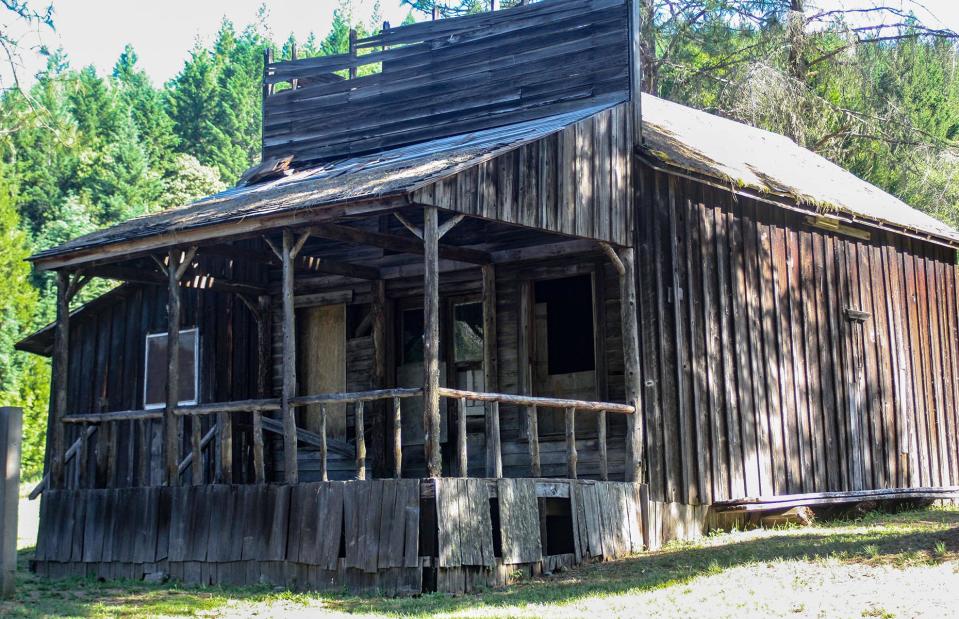
Susan Rose/Flickr/CC BY 2.0
When the gold was depleted and the mines closed, Golden was soon abandoned. Today just four creaking structures remain. Wander through the tree-studded site to see an eerie old wooden church, an echoing post office and store, a shed and a former home.

